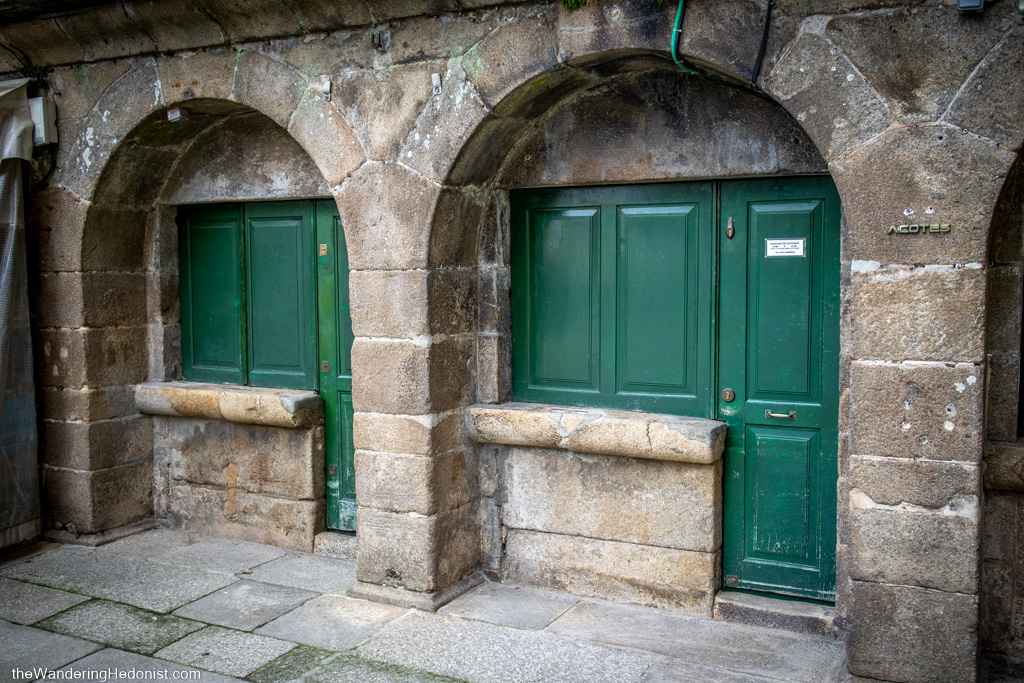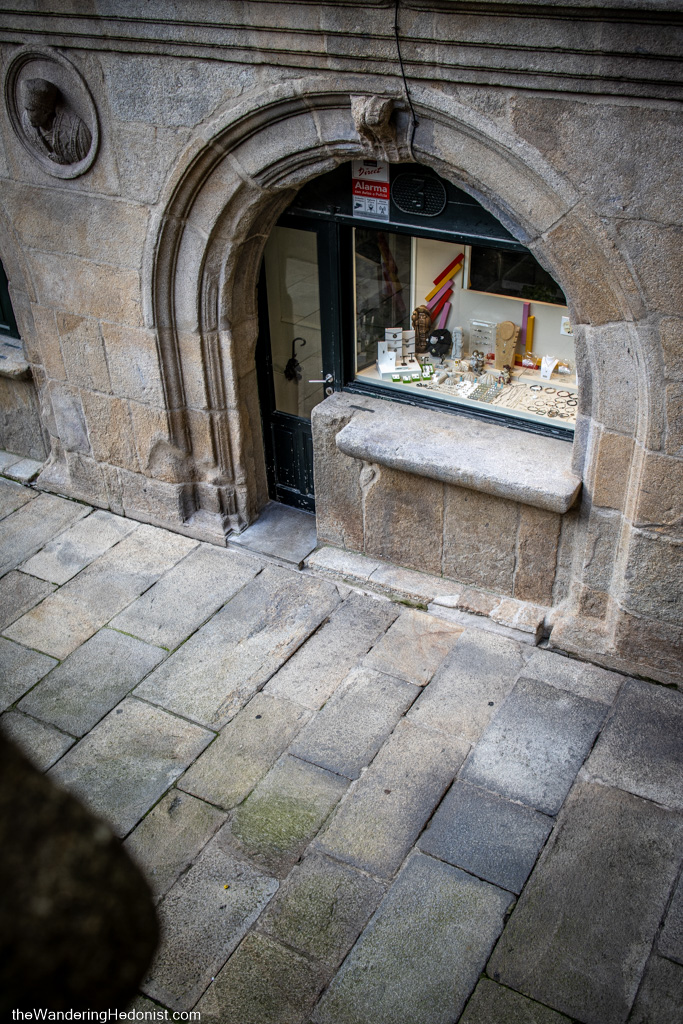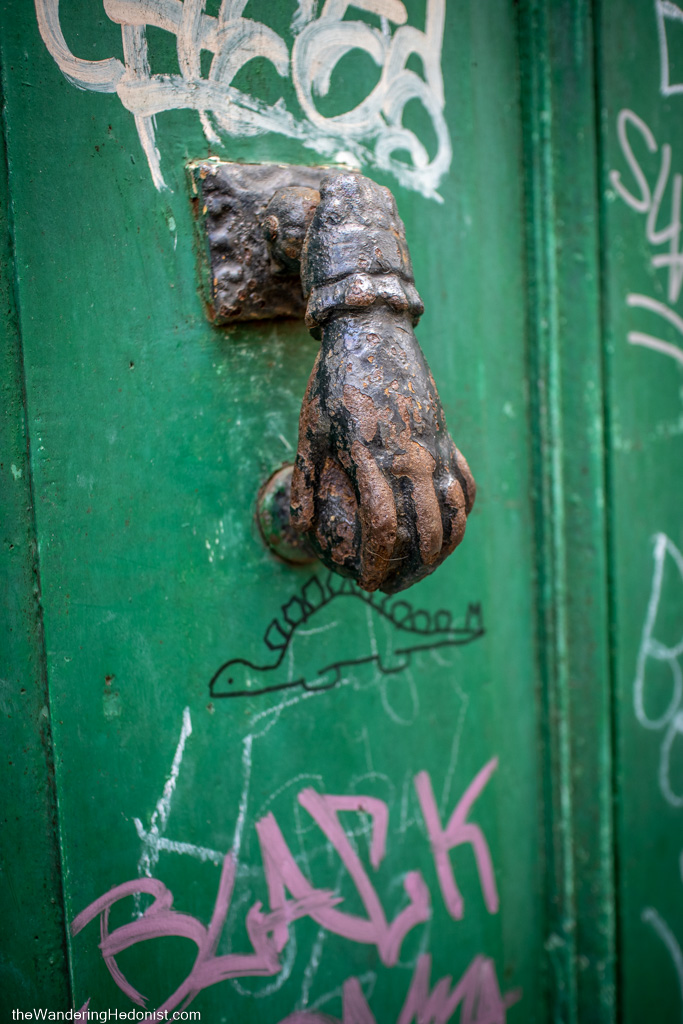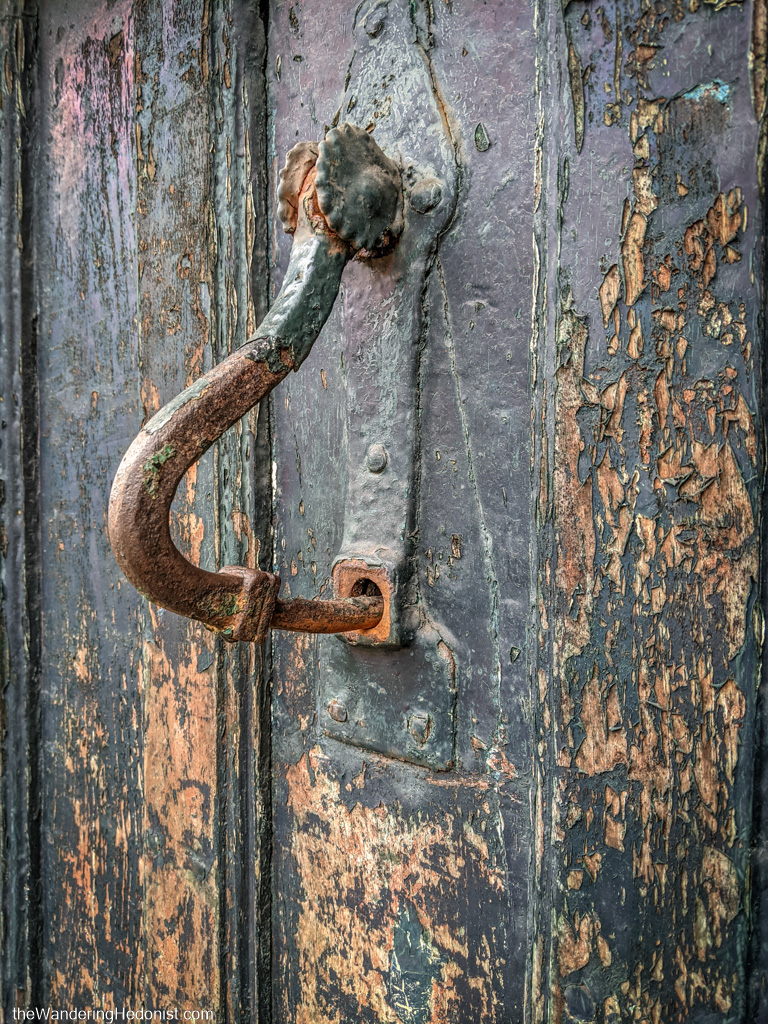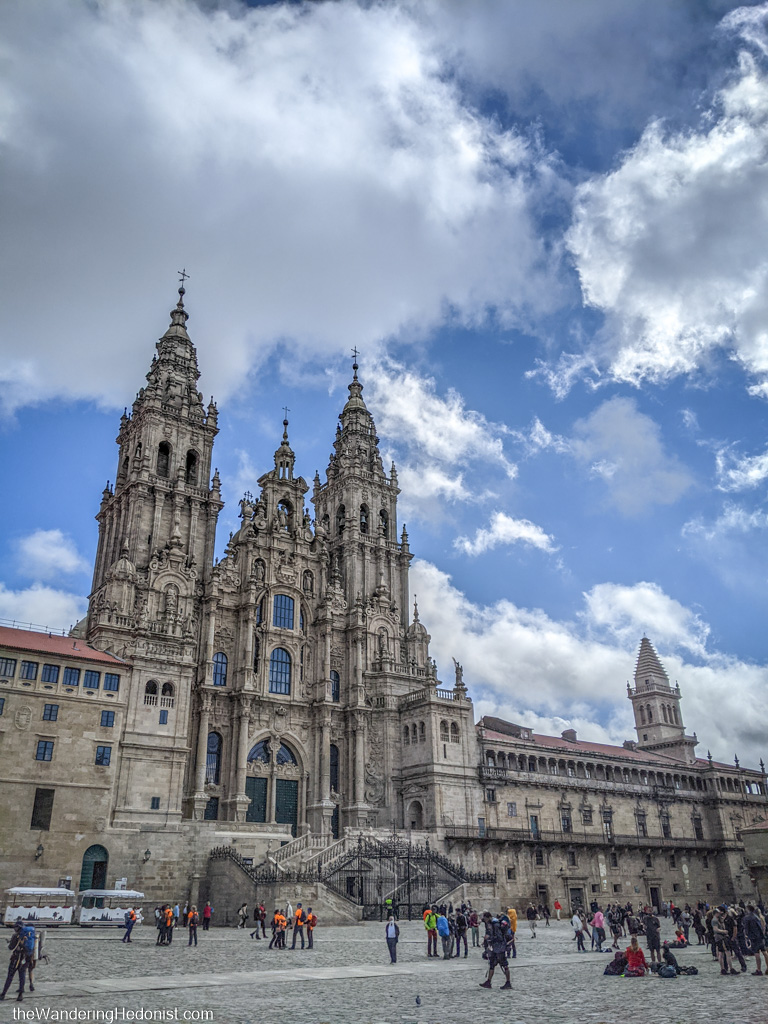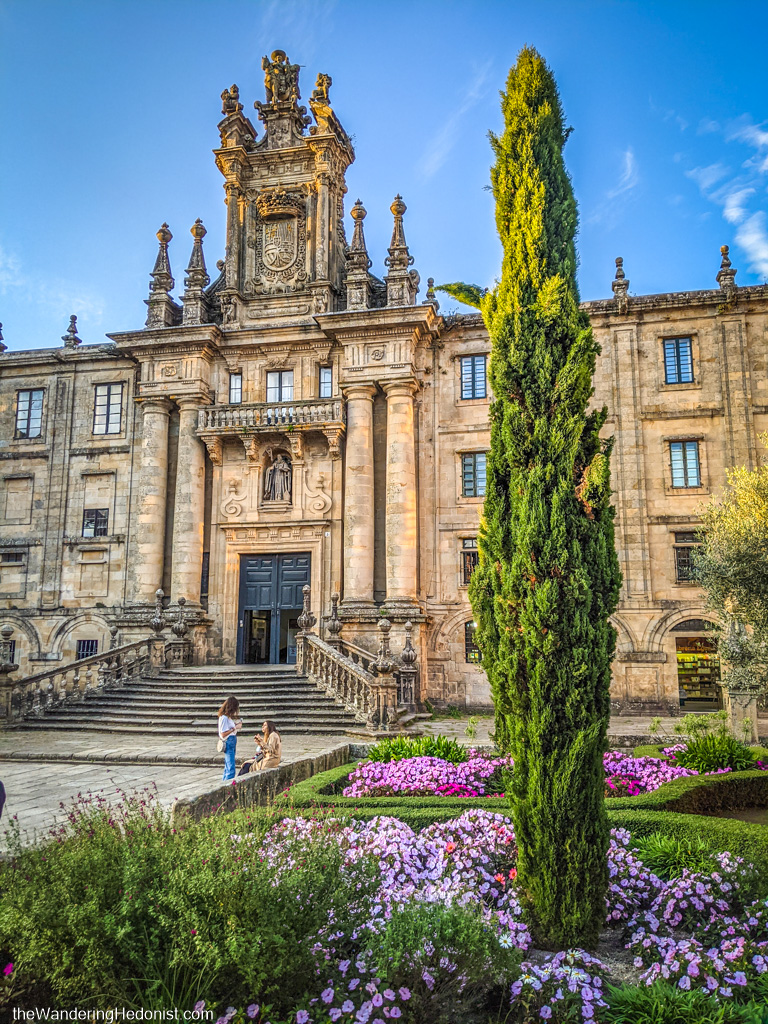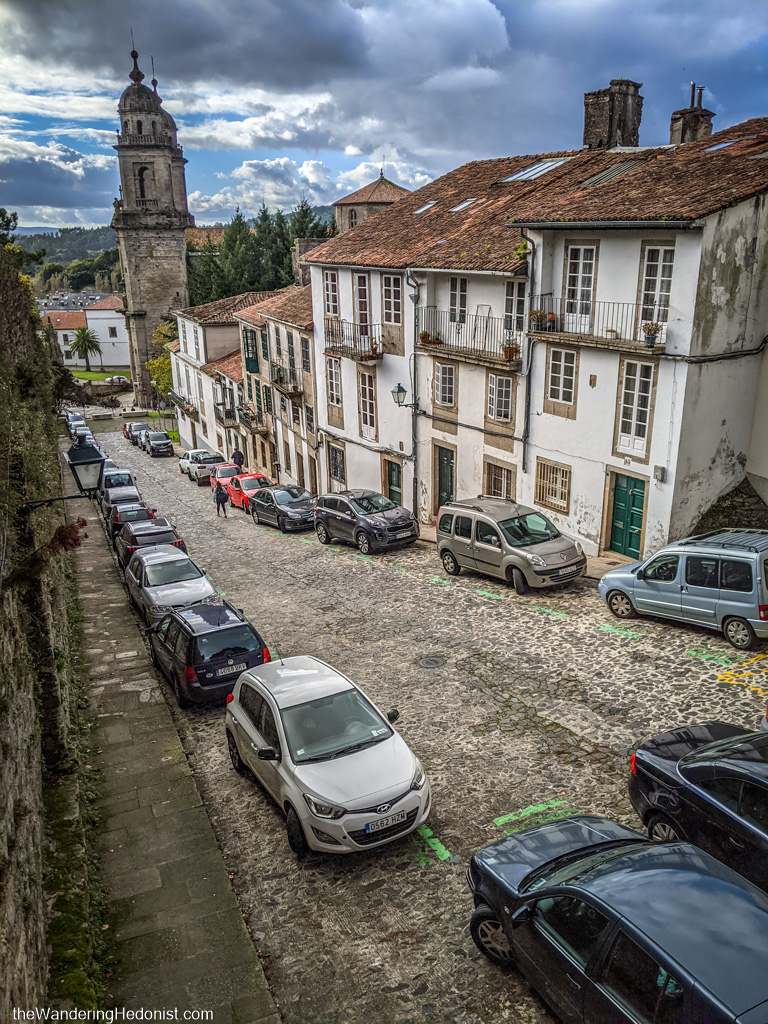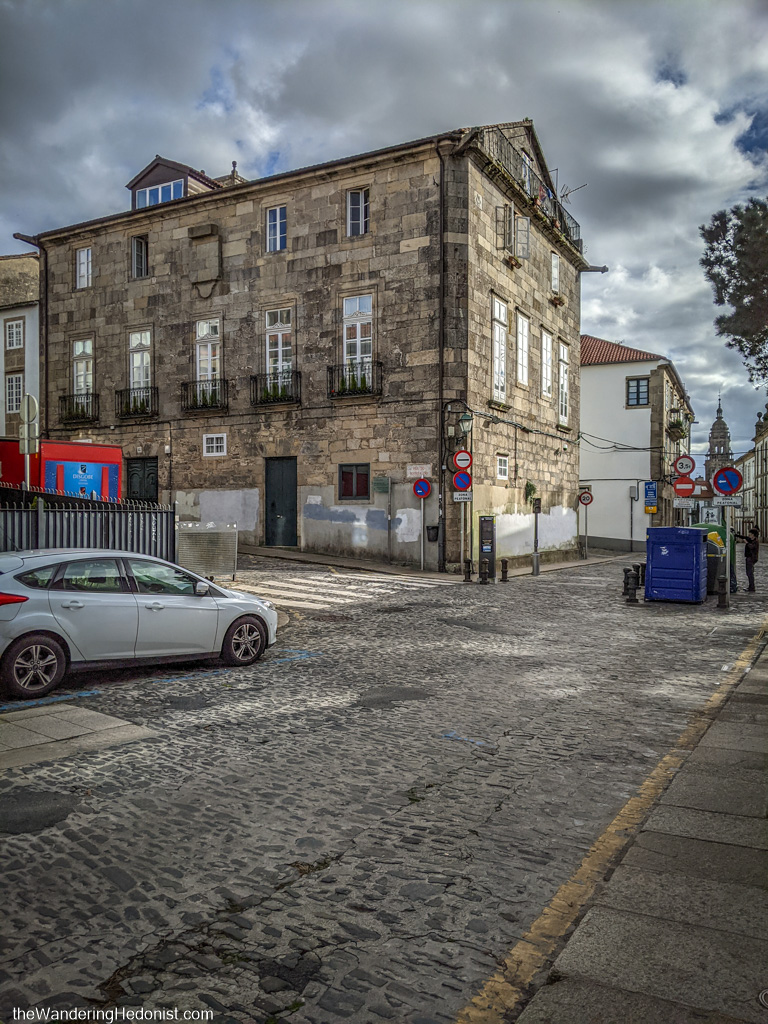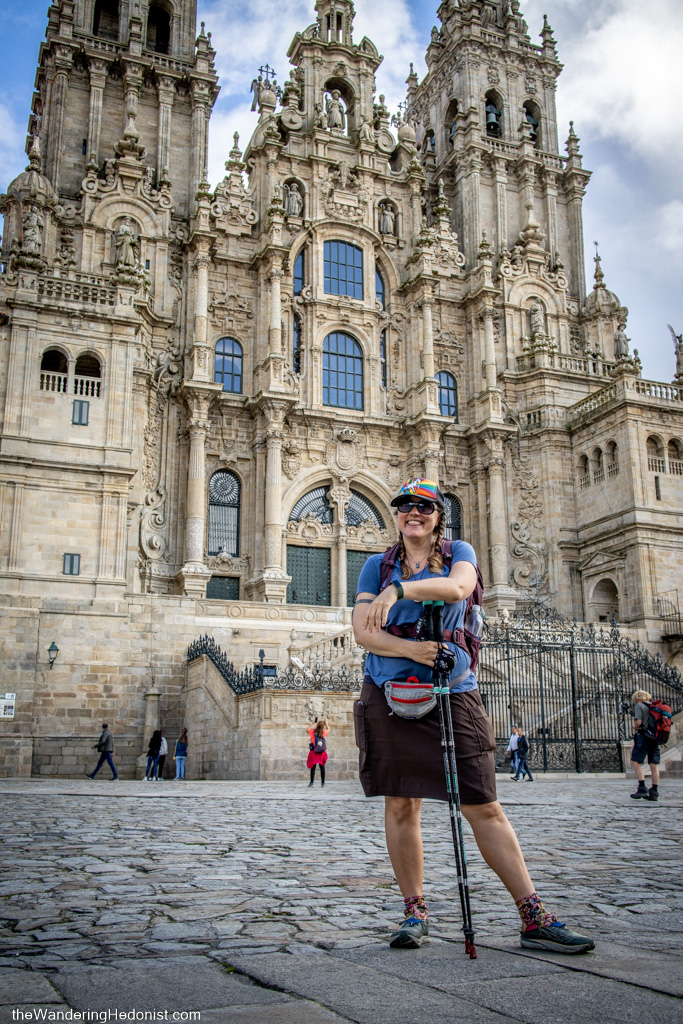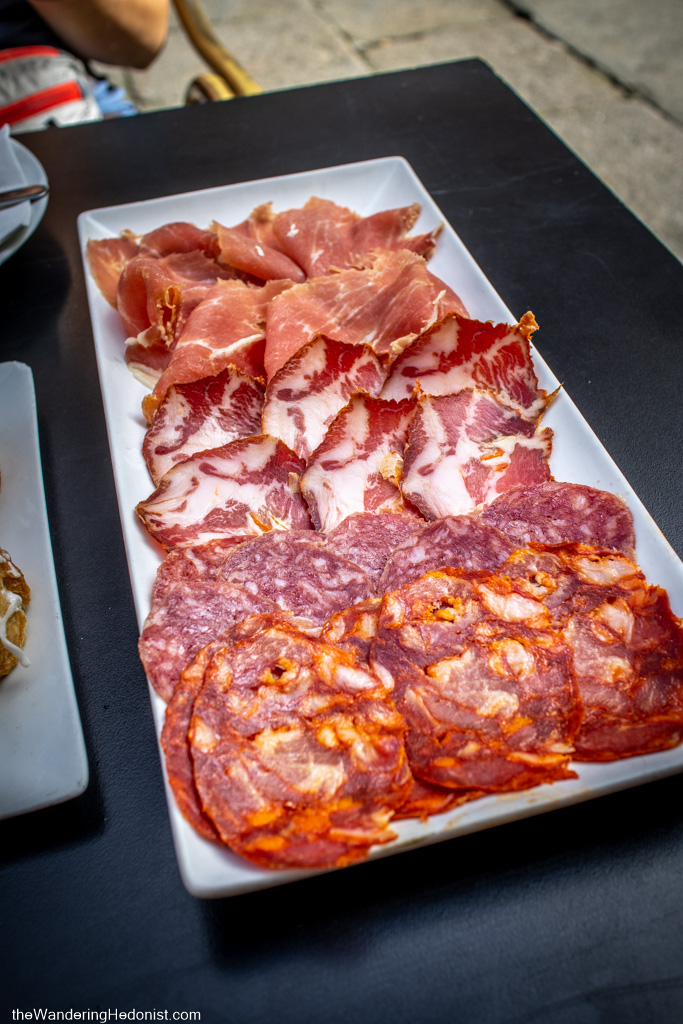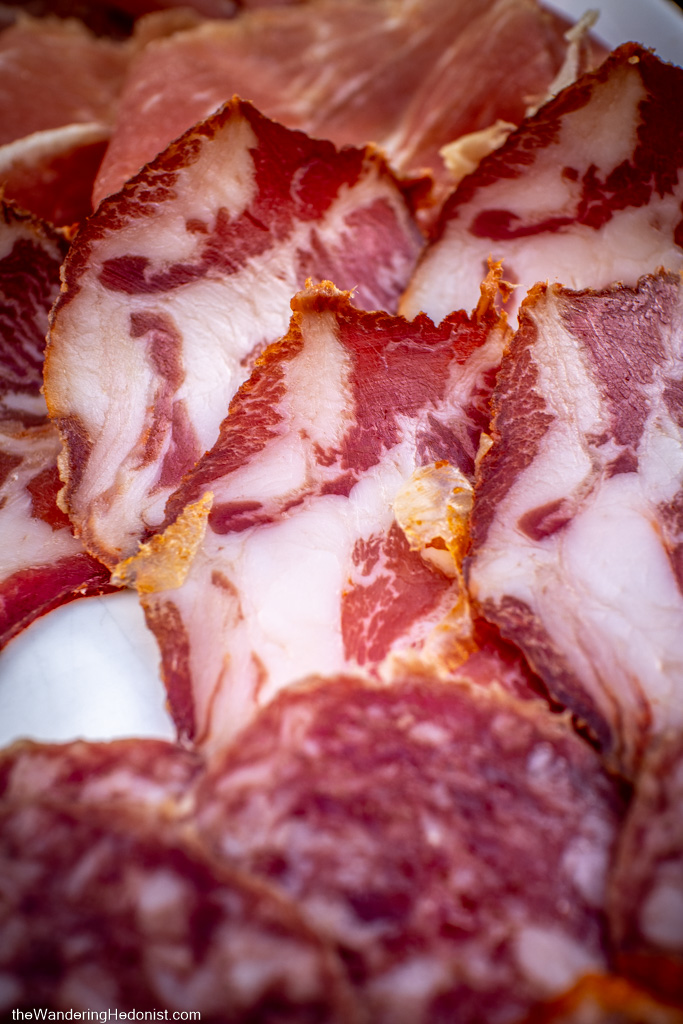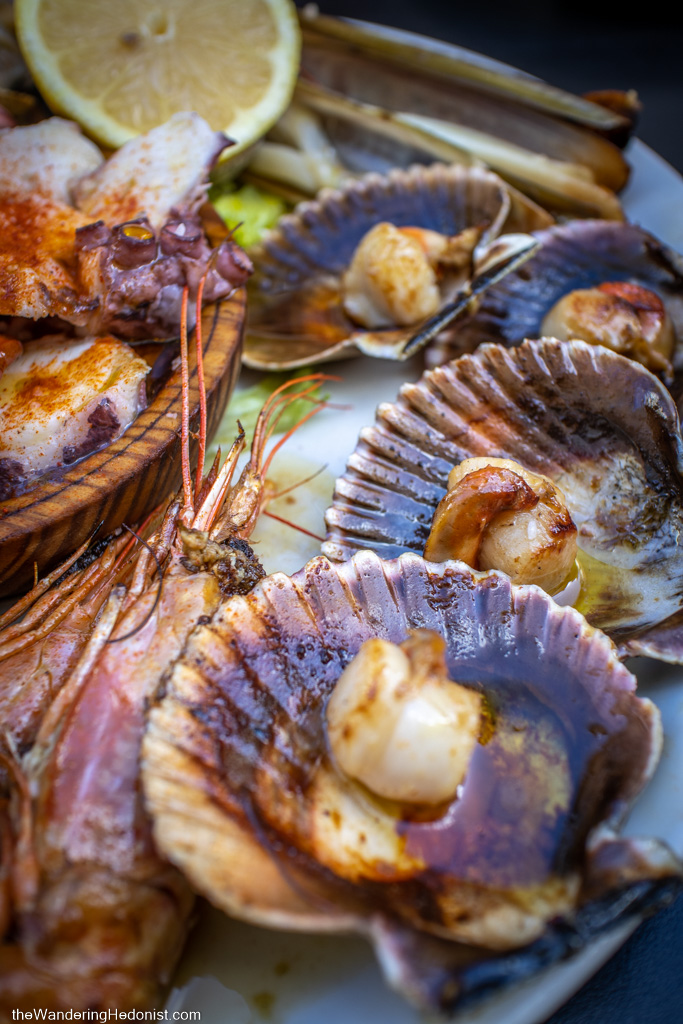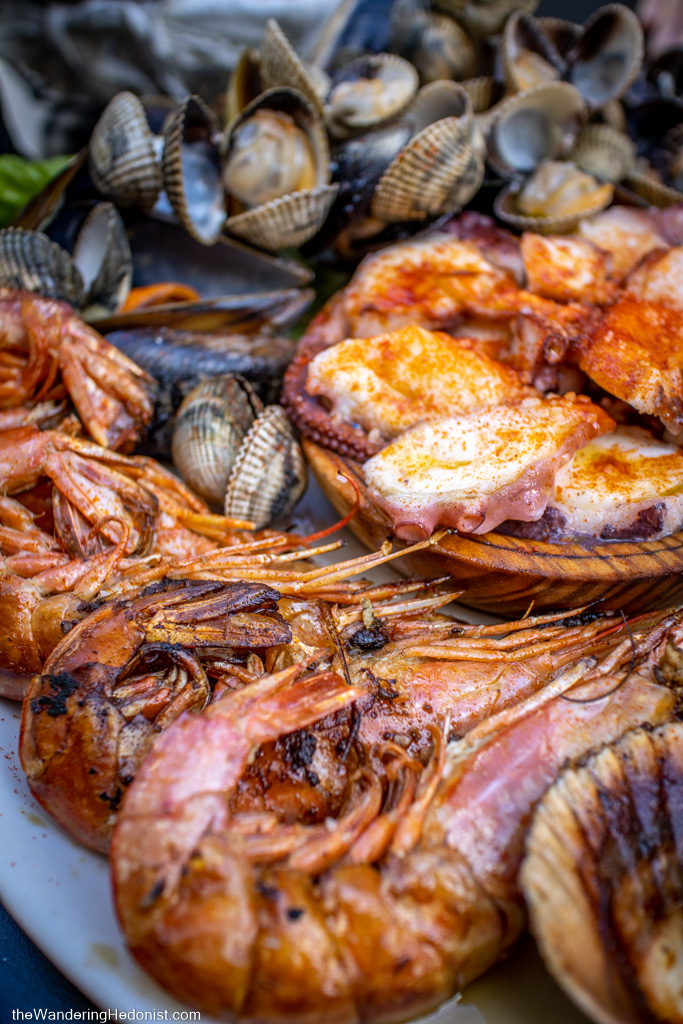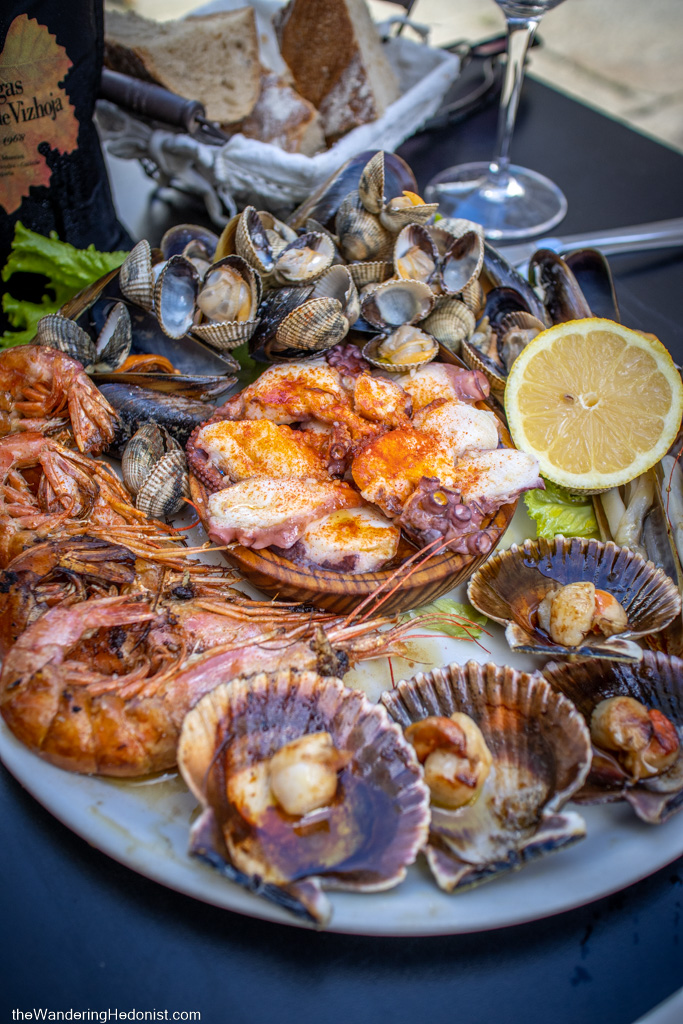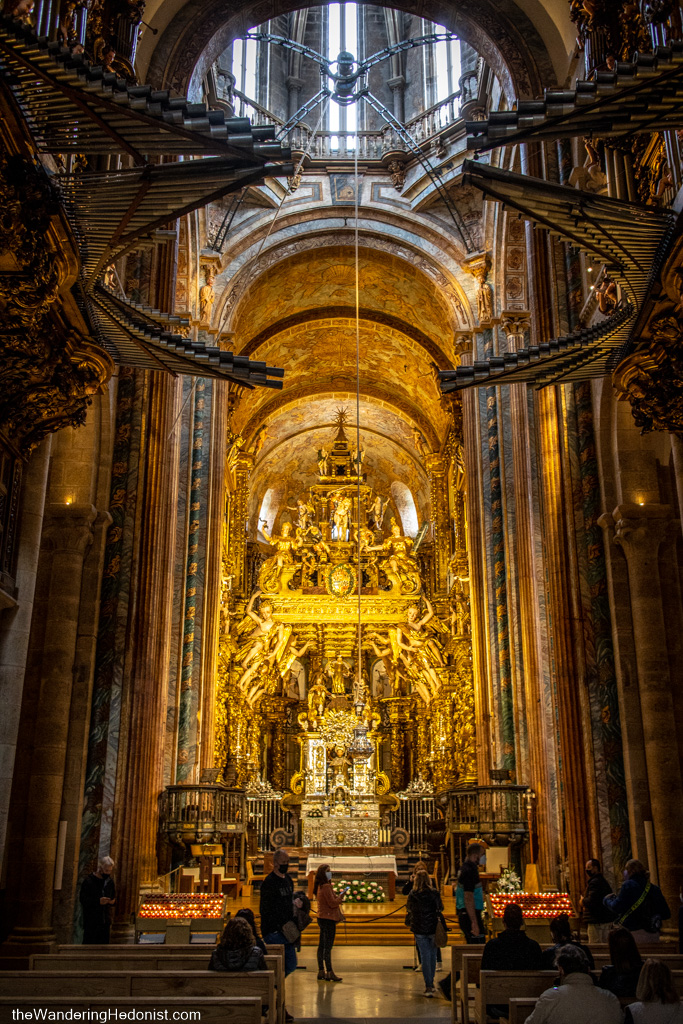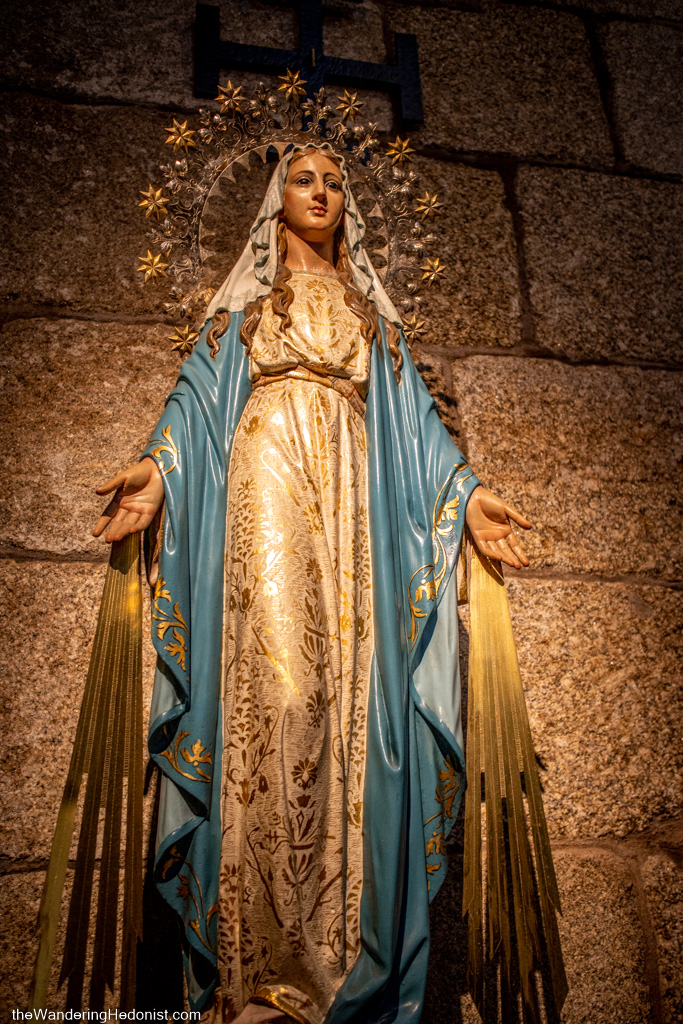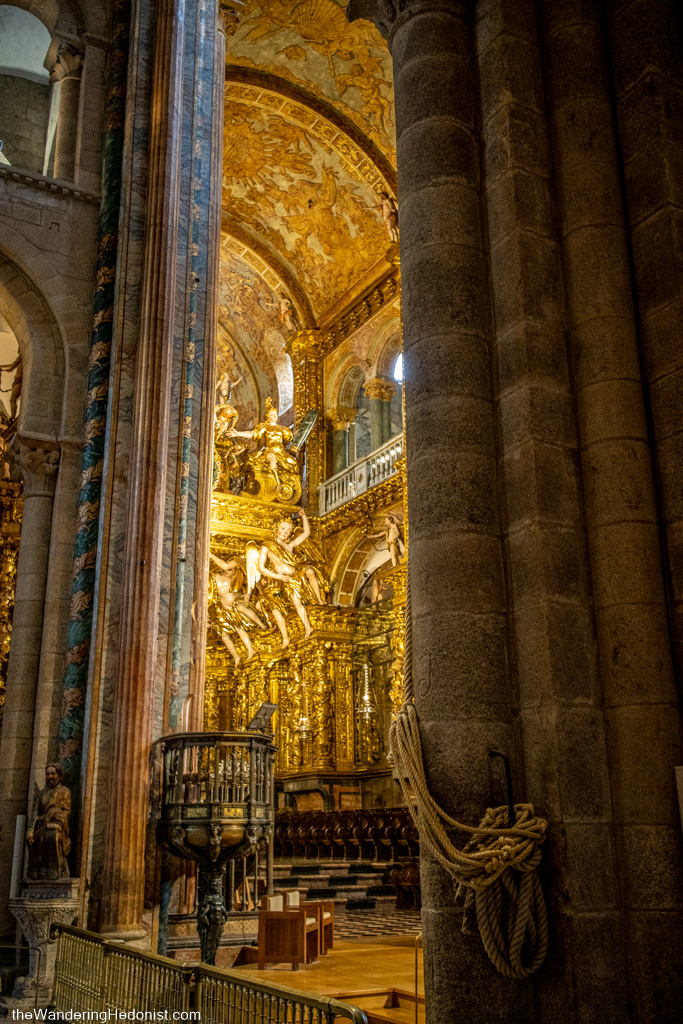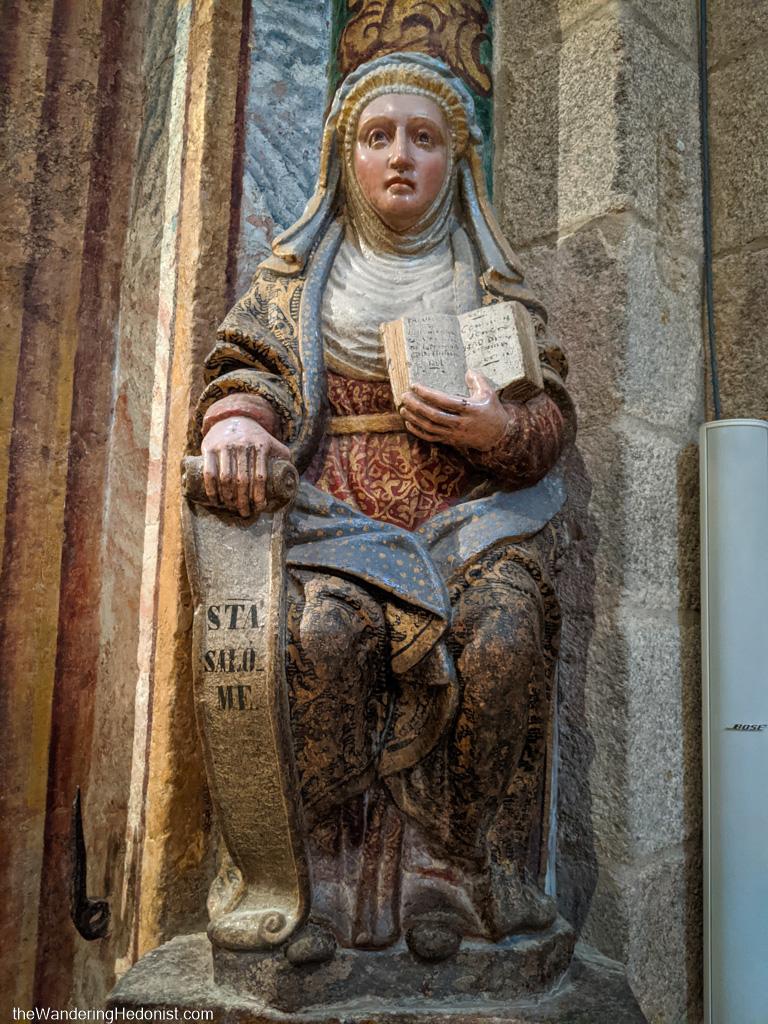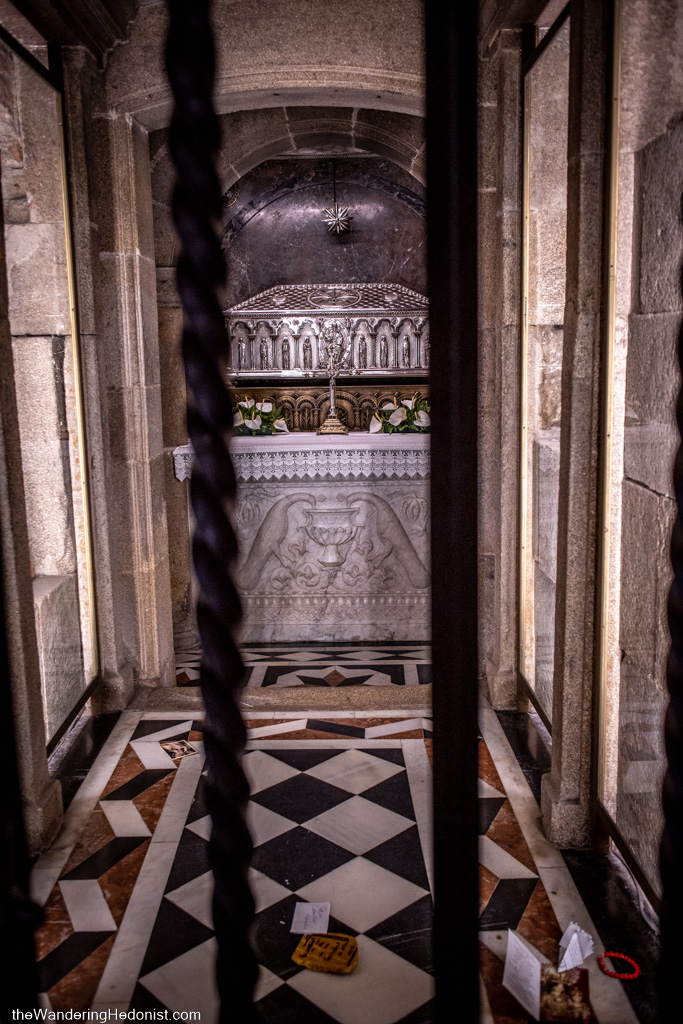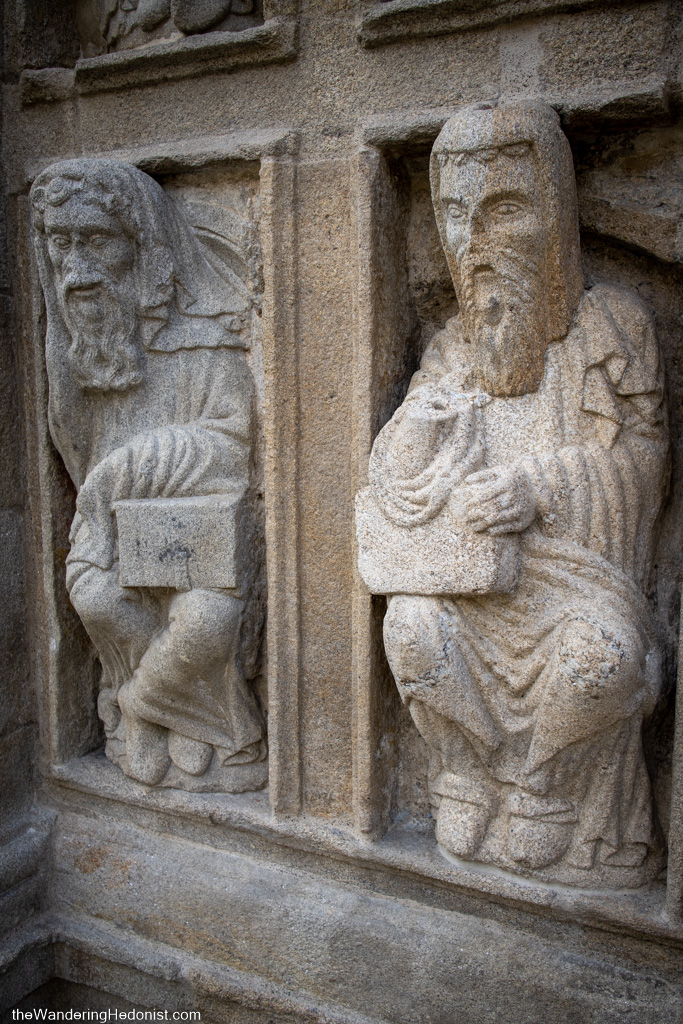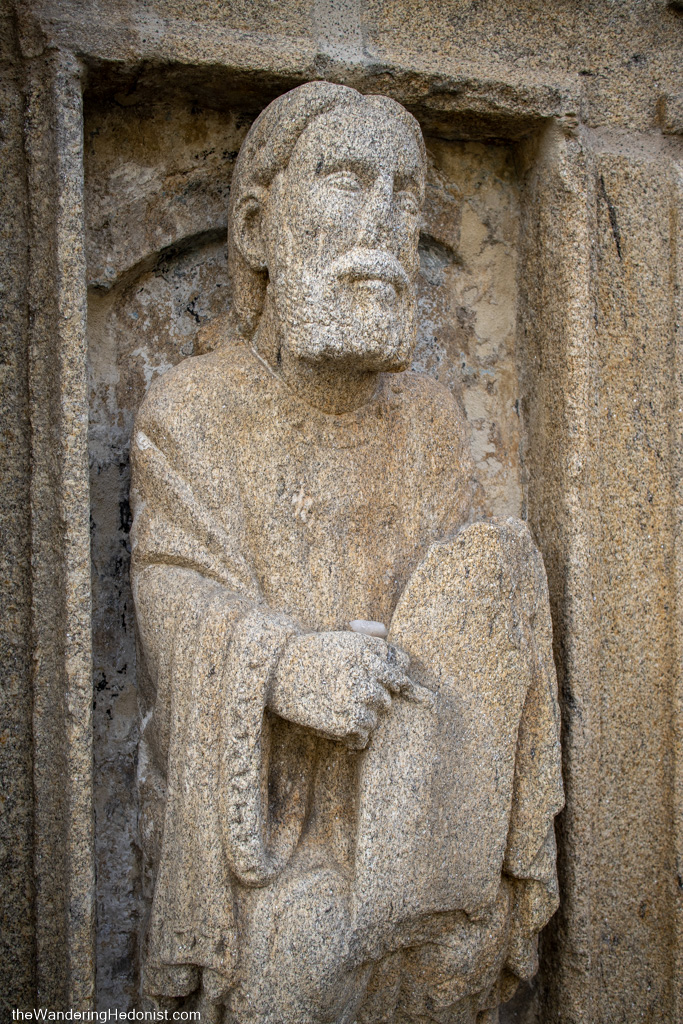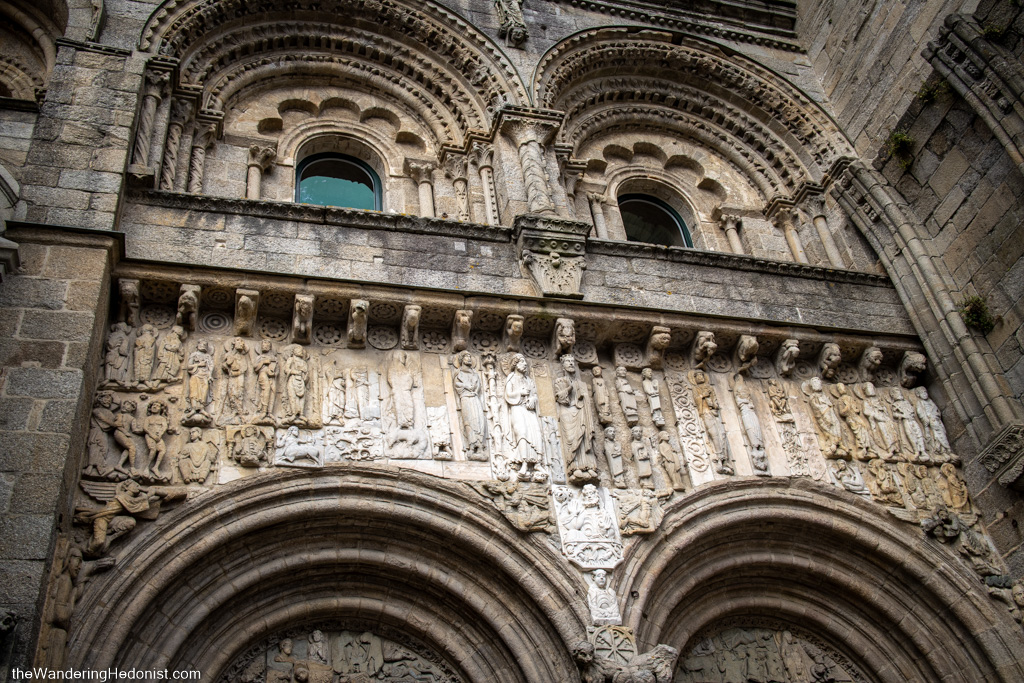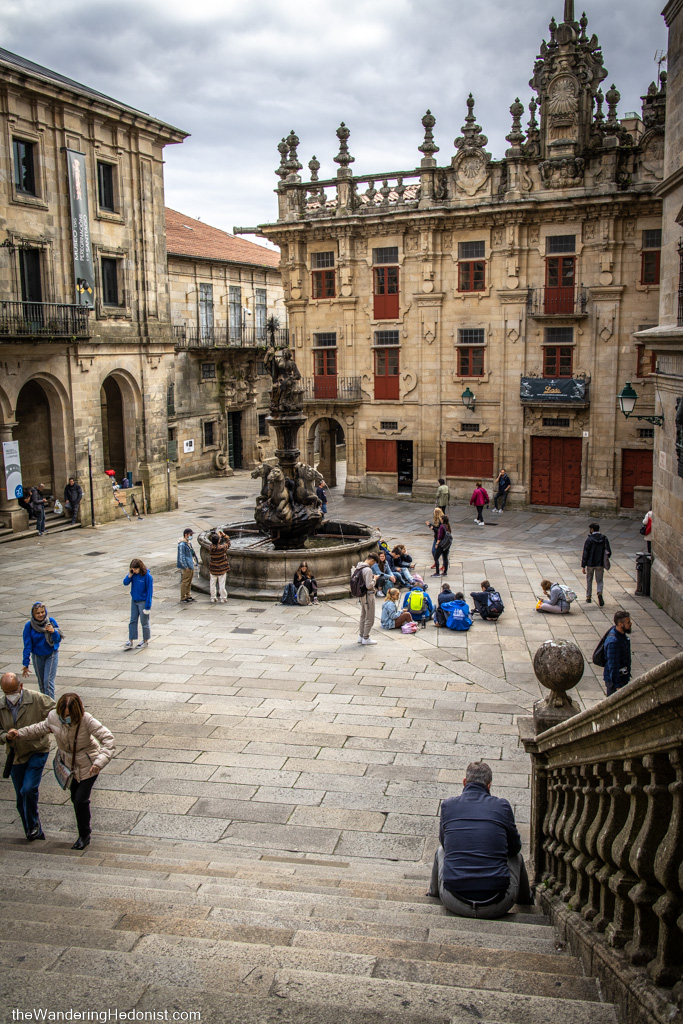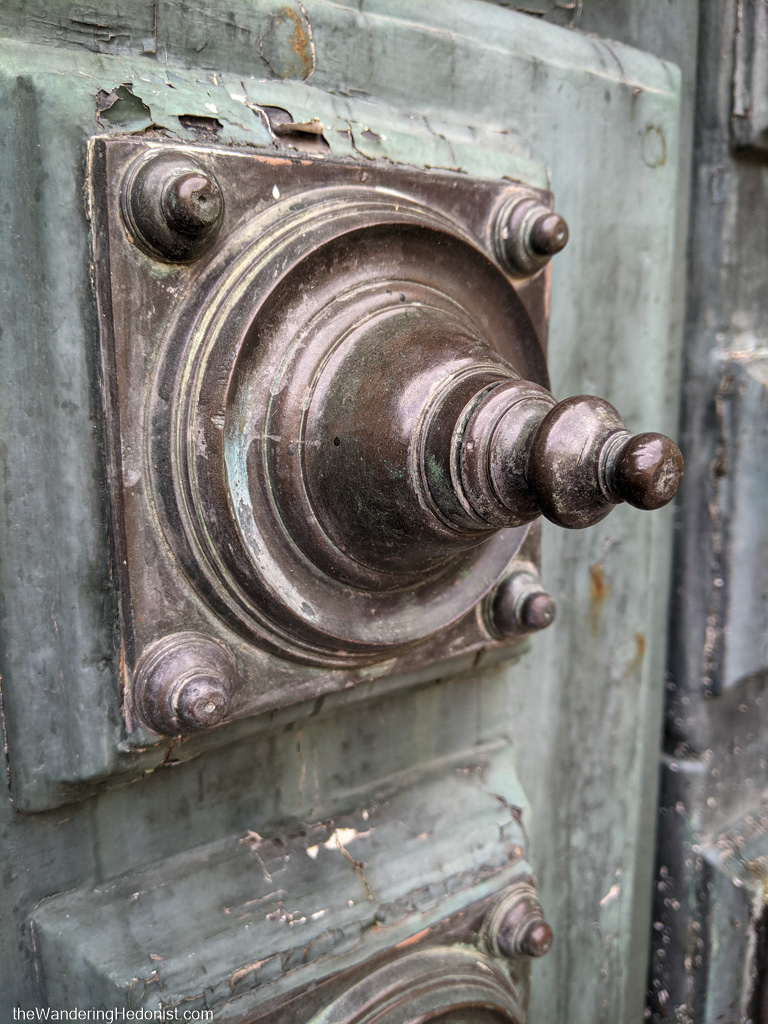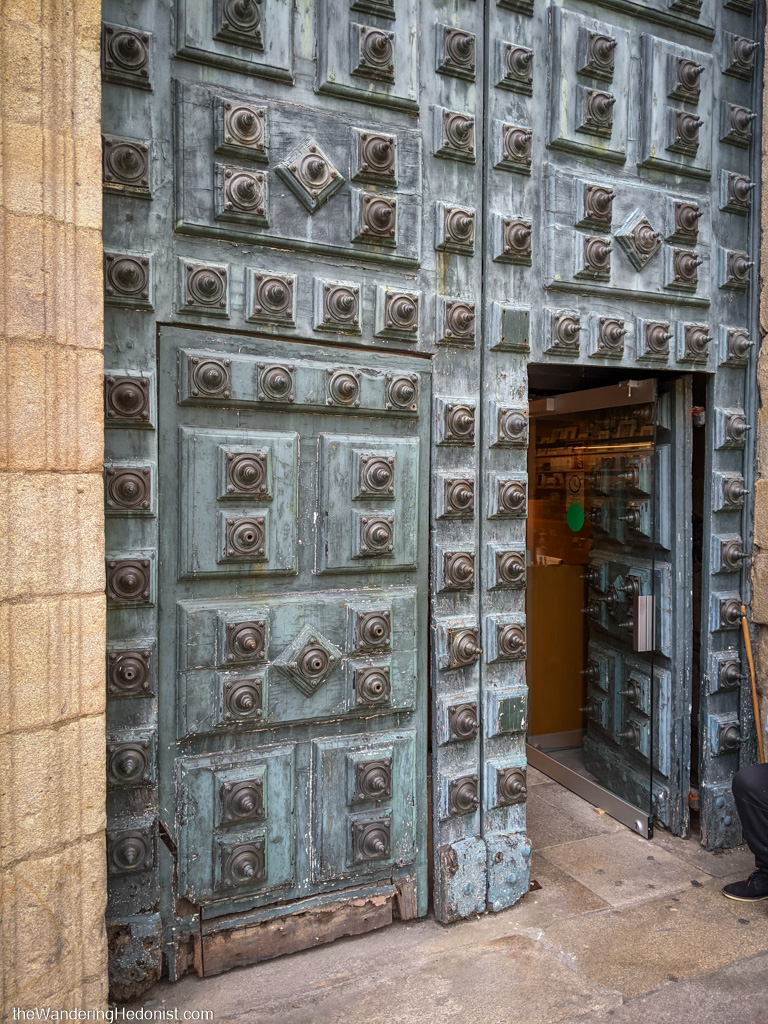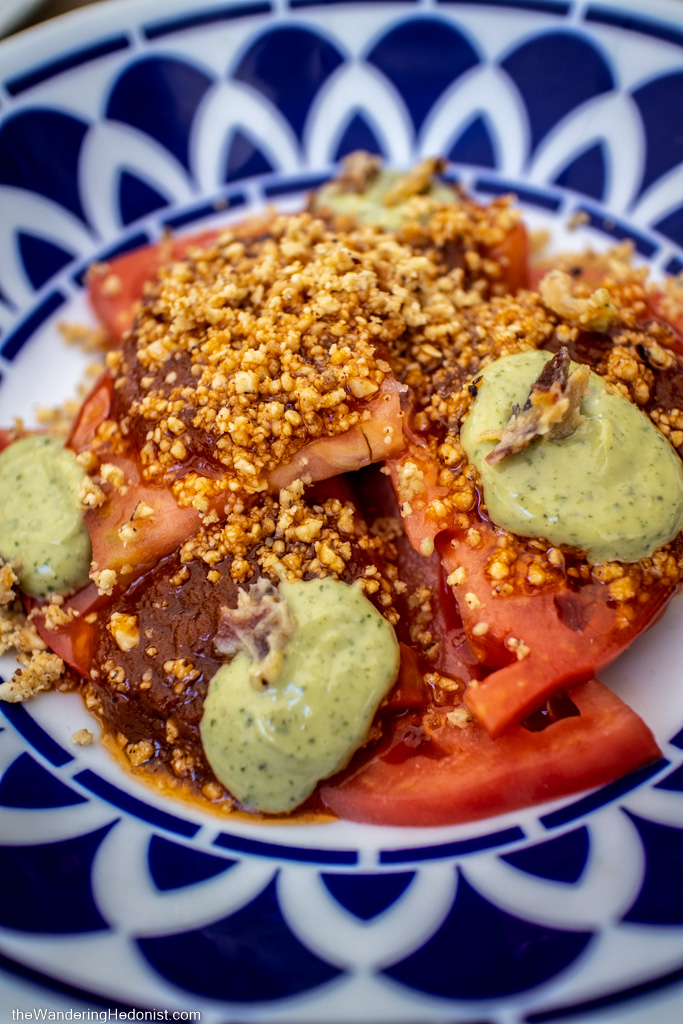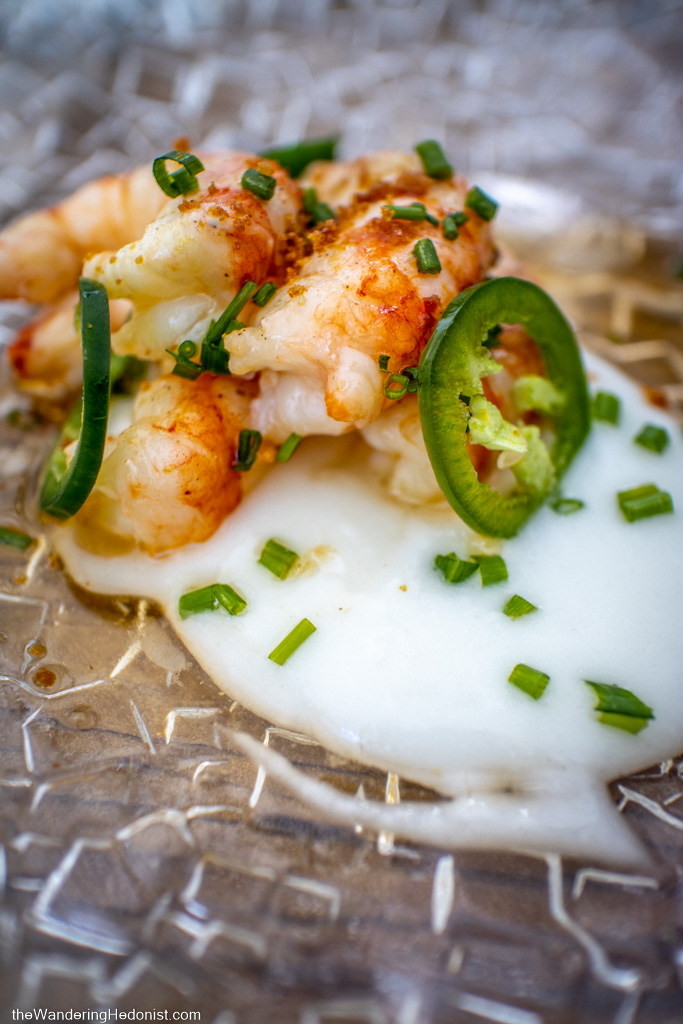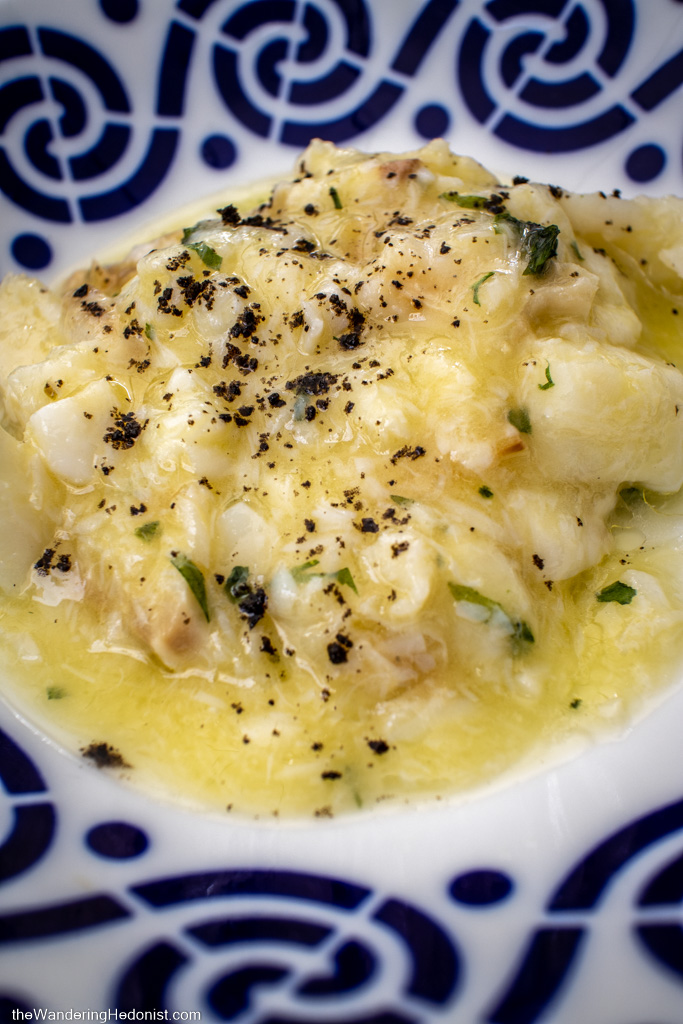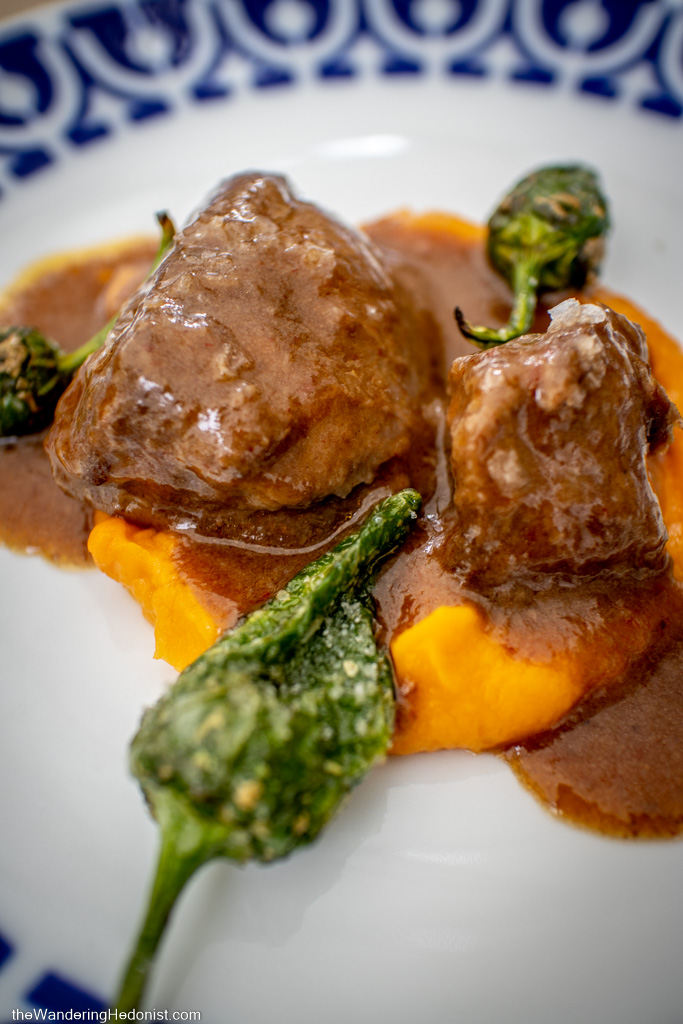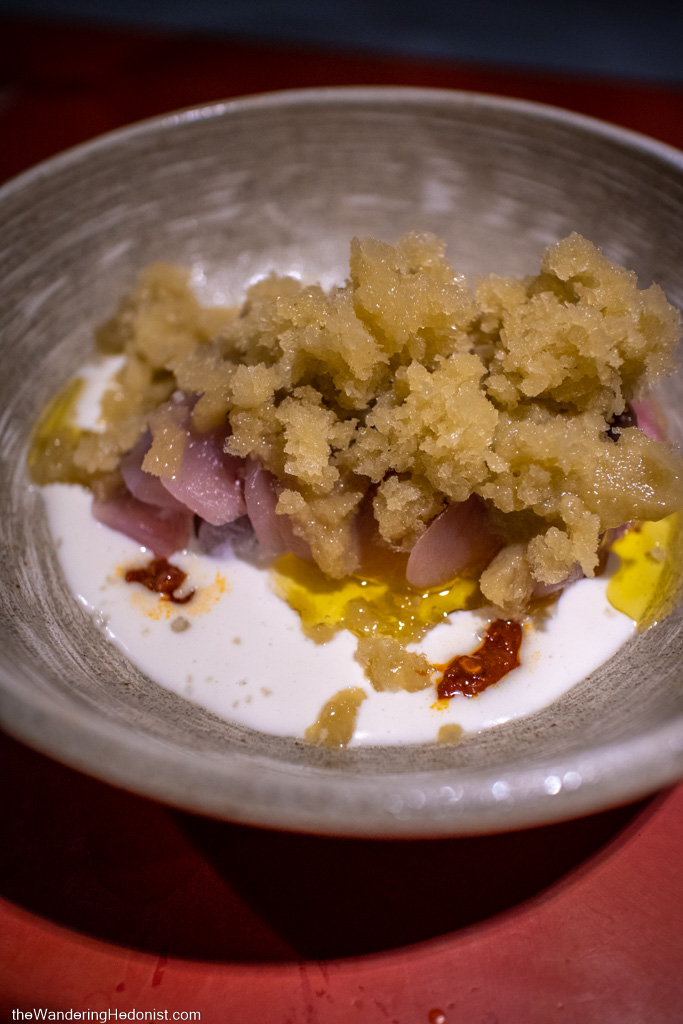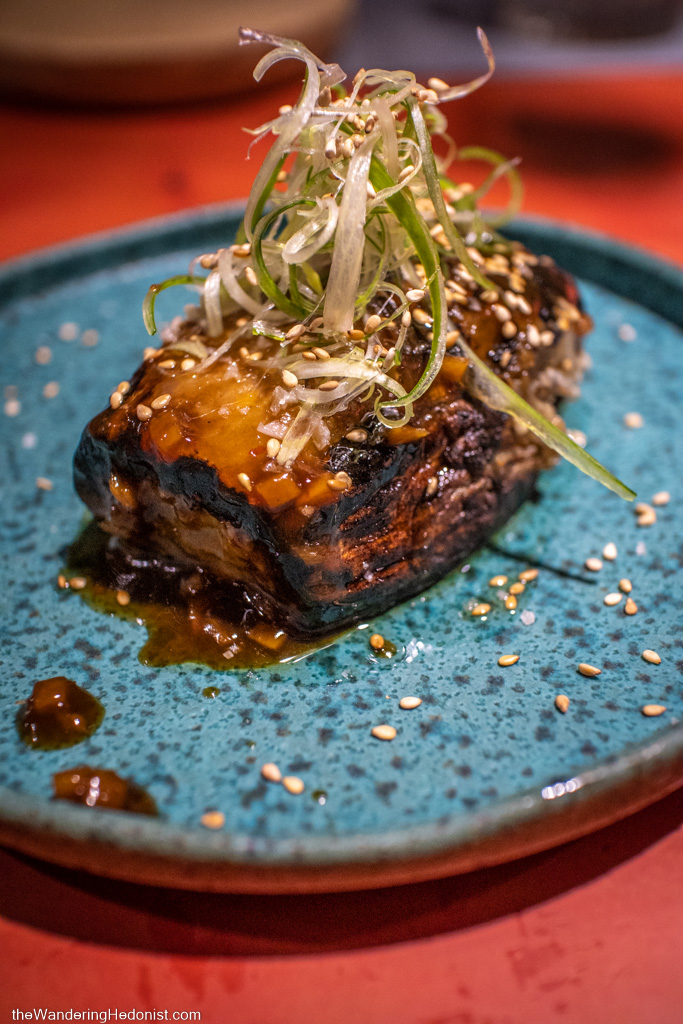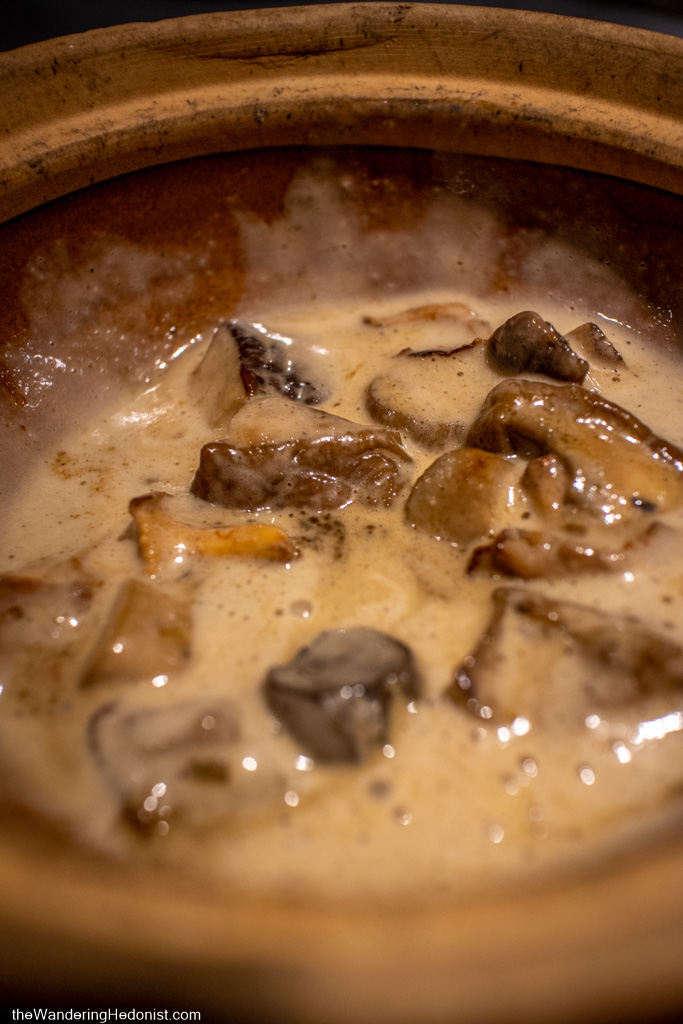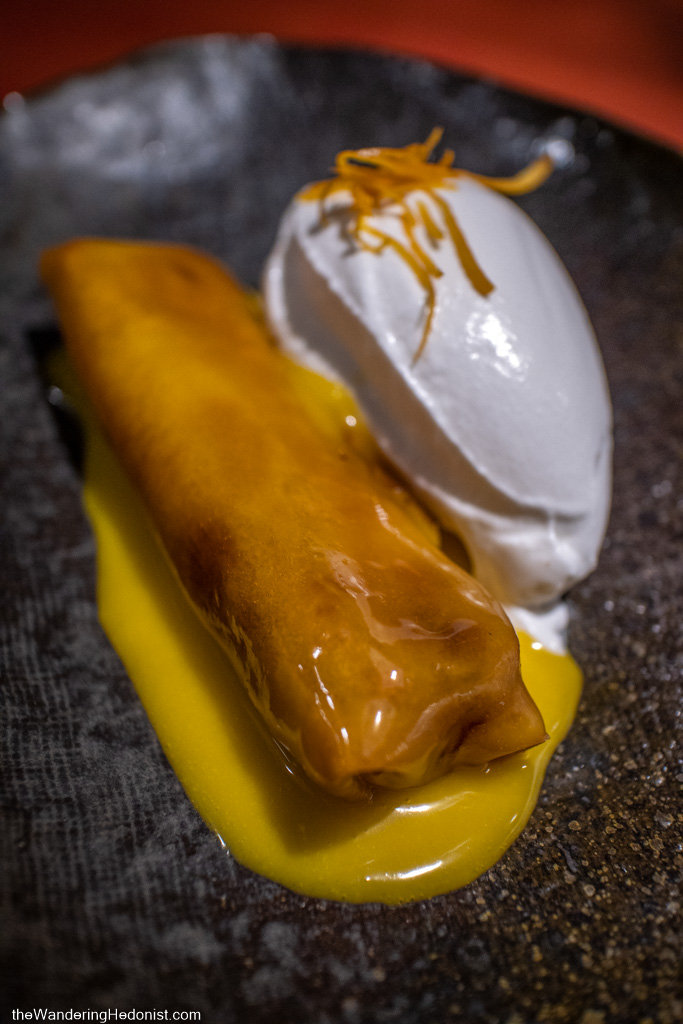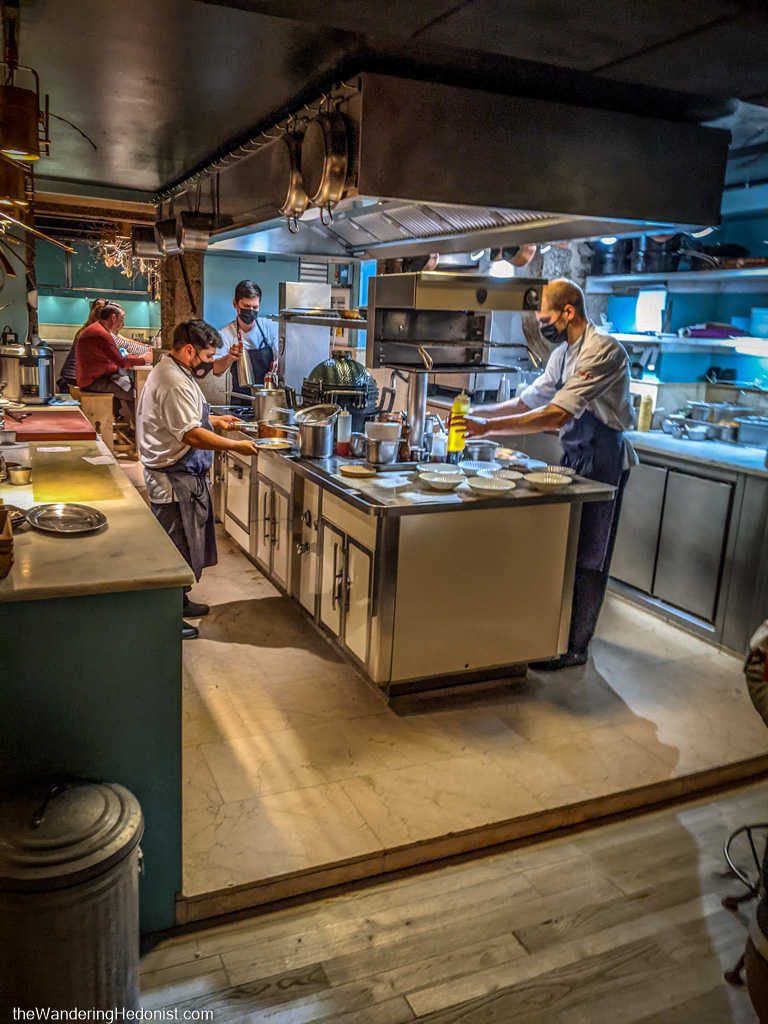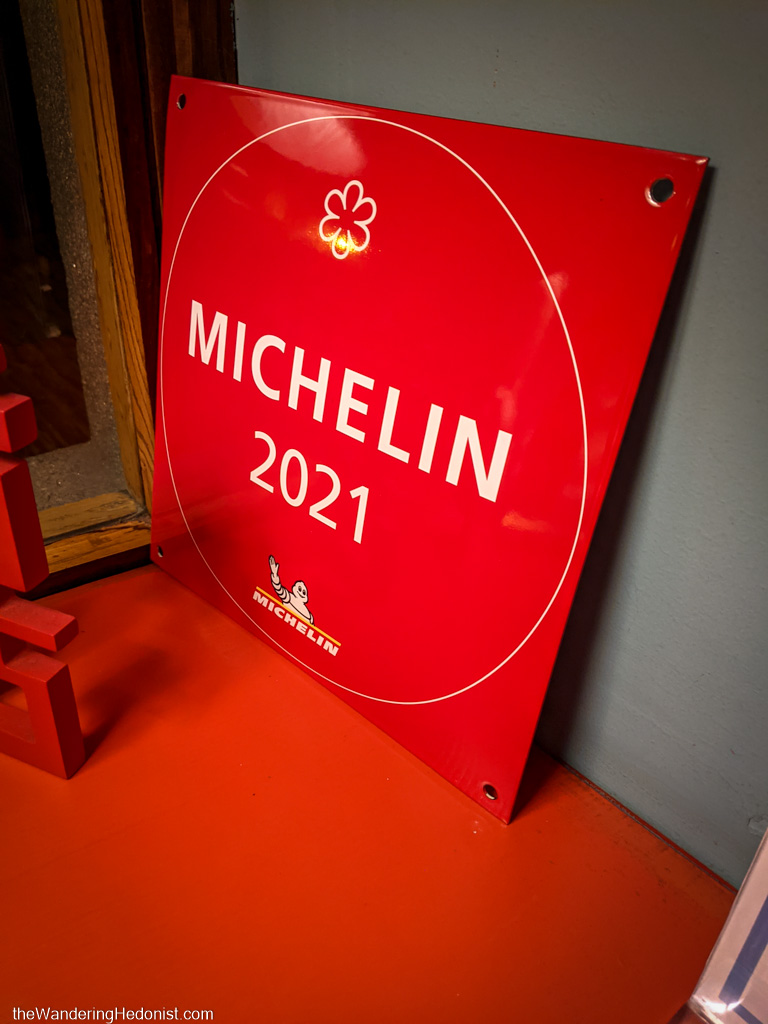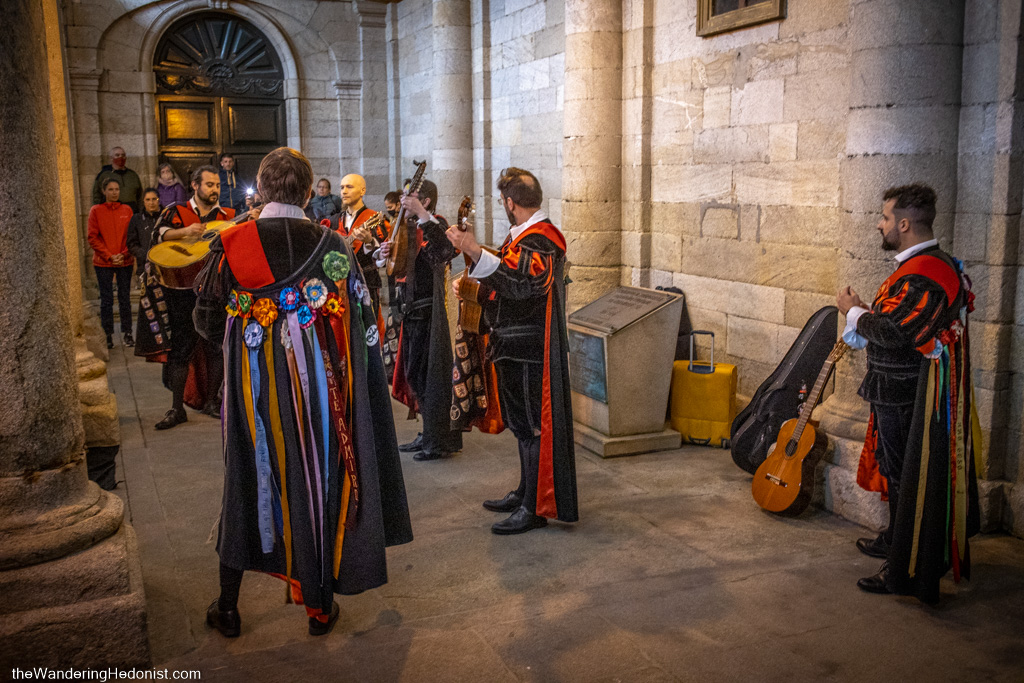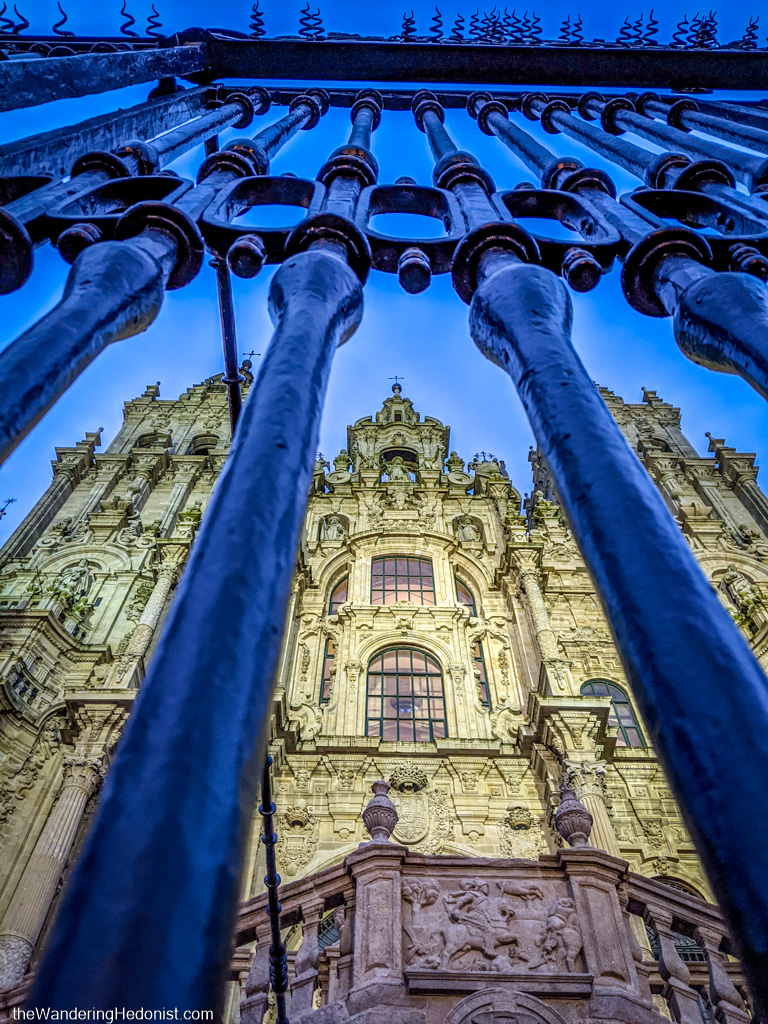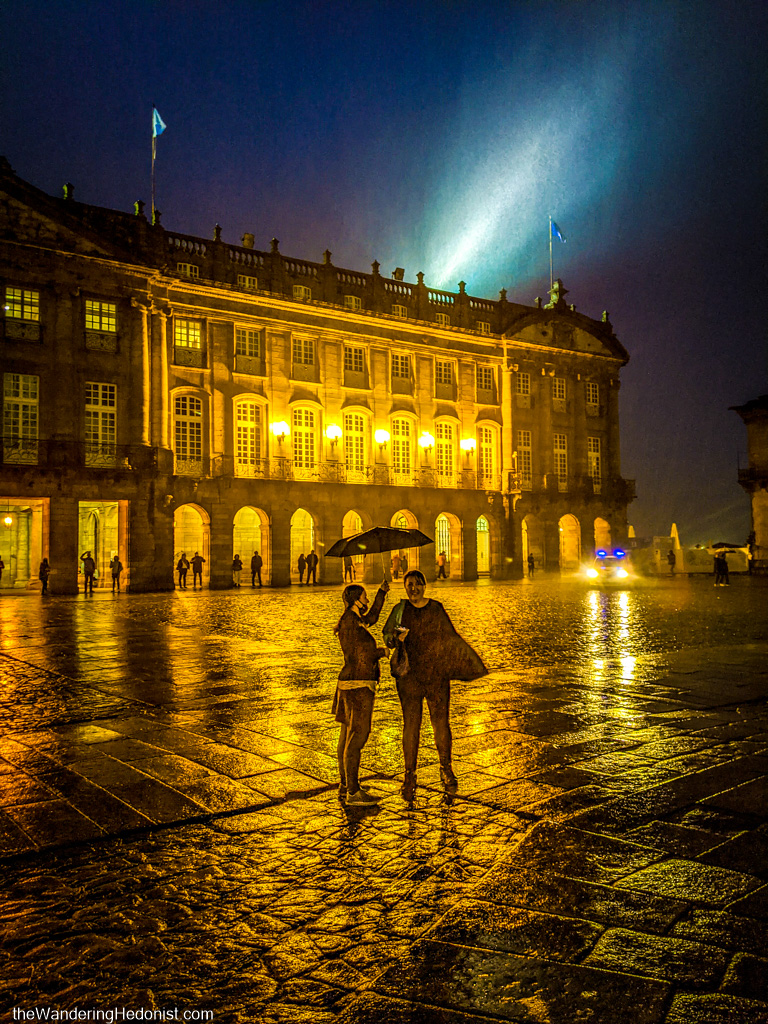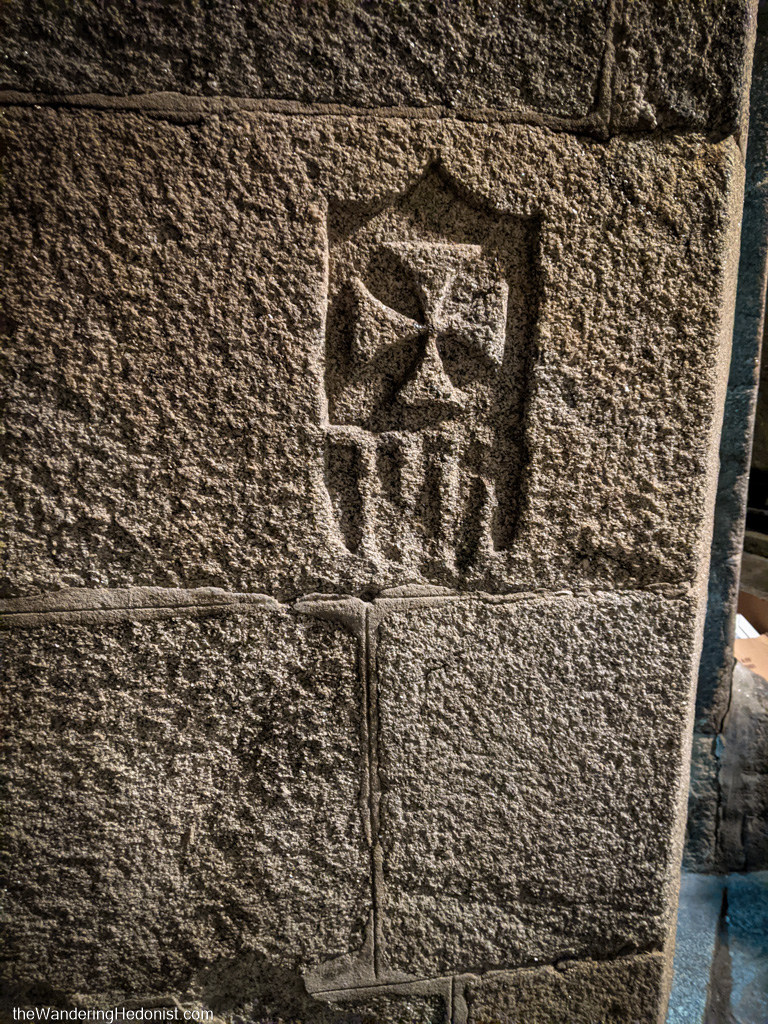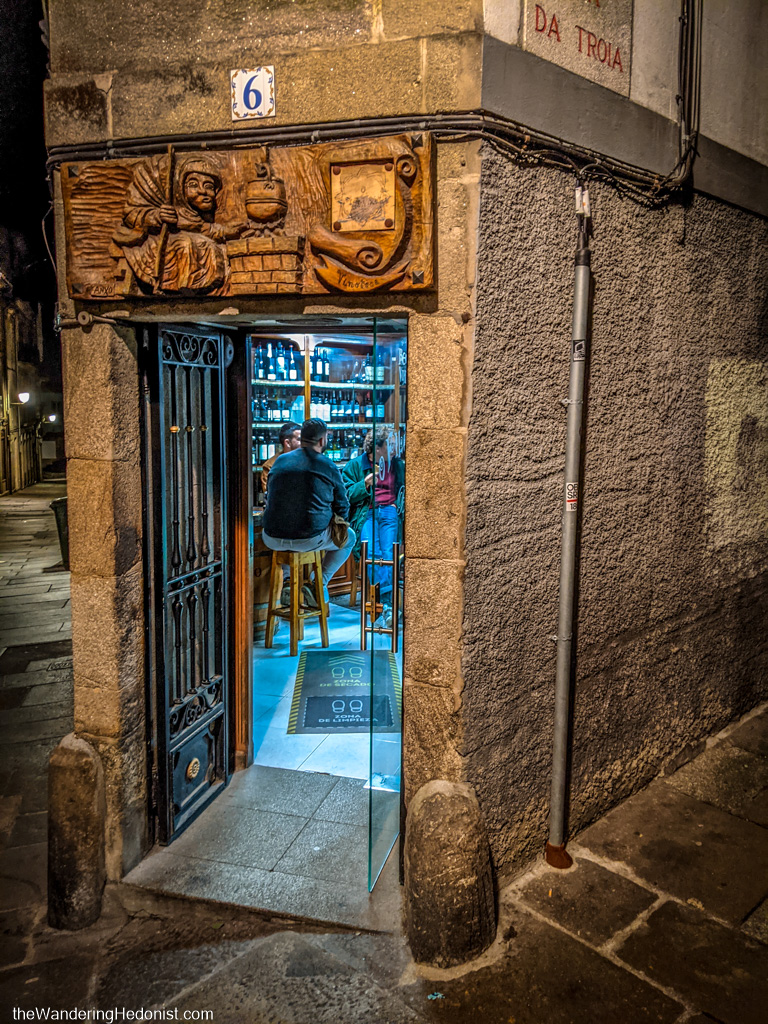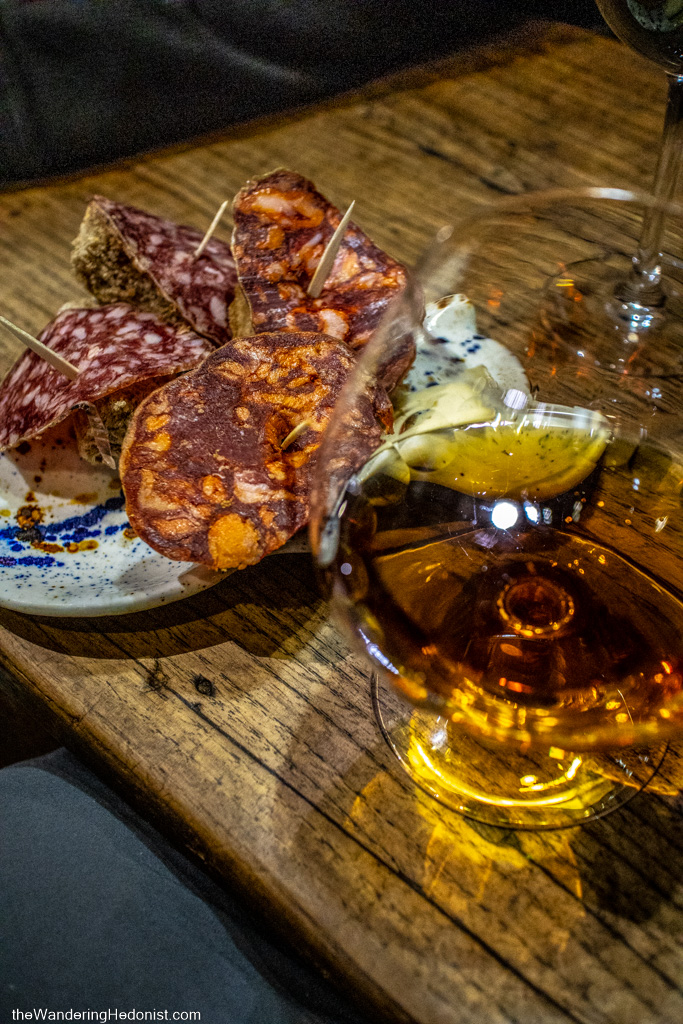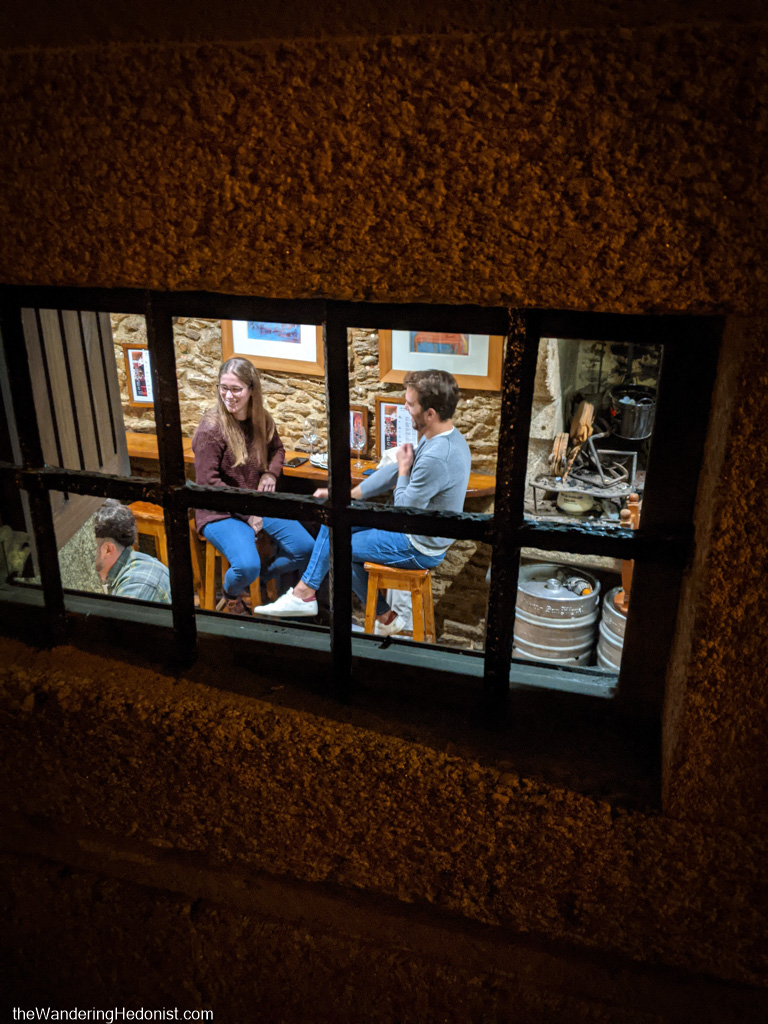The Cathedral of Santiago de Compostela in northwestern Spain was believed to house the remains of St. John the apostle and in the 10th century became one of the three great pilgrimage sites of the Catholic church (Rome and Jerusalem being the others) where one could earn a plenary indulgence for the journey. There are many routes across Europe all leading to the church and are known loosely as the Camino or “the way” of St. John. These routes have become popular amongst catholics and hiking enthusiasts alike drawing nearly 350,000 pilgrims in 2019. Since the church recognizes the journey, pilgrims are issued paper passports which get stamped by establishments along the way to prove your progress and the church issues a certificate upon arrival.
There are several major routes but my wife Katy decided to hike the Camino Portugués which starts in Porto and is about 150 miles, a long goal of hers. I had rented an apartment in Porto and saw her off and took a bus to Santiago to be there when she arrived at the cathedral 16 days later.
Santiago turned out to be a magical little town with amazing food, cool old architecture, and little winding lanes and tapas bars.
Walking around town.
Katy wasn’t entirely sure when she would arrive so I showed up a day or so early and got to wander around the town by myself for a bit. I had been living in Porto for 3 weeks so it was hard to break the habit of speaking to people in Portuguese. I rented the top floor of this old building close to the cathedral (mostly because it had a tub and Katy loves bathtubs). There’s a constant stream of pilgrims arriving throughout the day and this convivial sort of victorious conclusion kind of vibe. Exuberance and weariness. Huddles of young and old pilgrims saying sad goodbyes to their trail friends and basking in the glory of the completed journey.
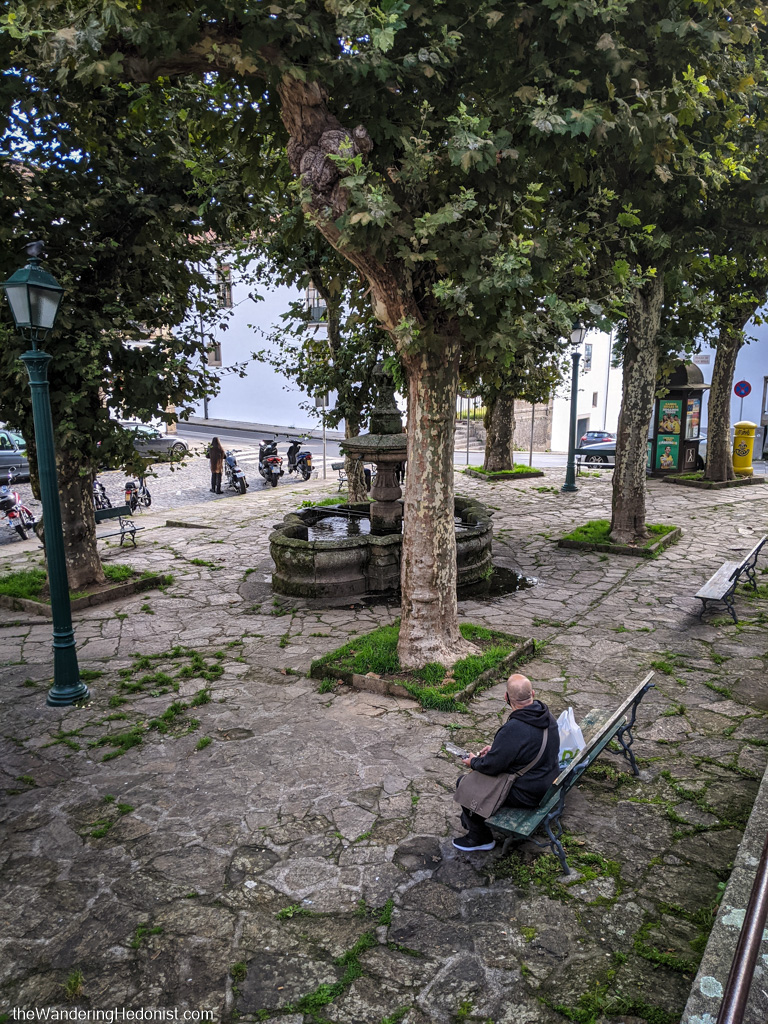
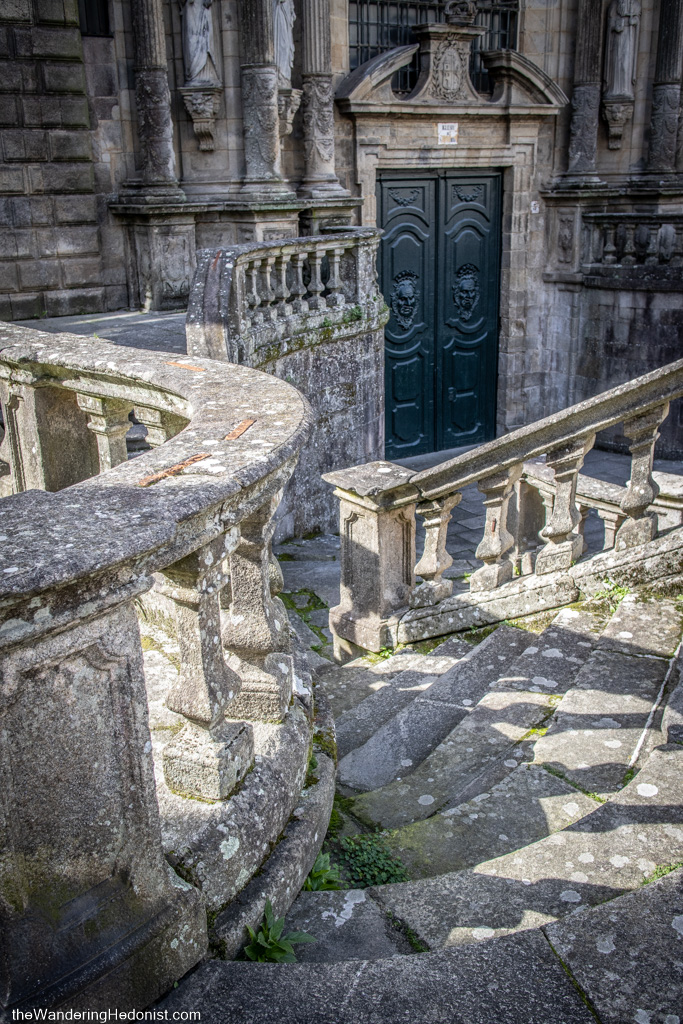

Meeting Katy at the Cathedral of Santiago de Compostela
I coordinated with Katy to be sitting in the square of the cathedral when she initially arrived. We hadn’t seen each other for over two weeks so it was a joyful reunion. We languished with travel stories and eventually went to a local tapas bar for some food. And this being Spain, we were not disappointed. Since the process was notoriously long and convoluted, she decided to wait until the next morning to get her compostela.
A quick snack Spanish style.
A block north of the cathedral I had bought a coffee earlier at Vinoteca Cervantes and we went back because it was close and ordered the charcuterie and seafood plate which turned out to be spectacular. Our wine came with free tapas too. Yay Spain!
Inside the Cathedral of Santiago de Compostela
The next day we went back to the cathedral and explored it a bit. Since it was a holy year (when St. James Day, July 25th, falls on a Sunday) we were allowed to walk under the church shrine and see the vault that is supposed to house the remains of St. James. Fairly impressive as cathedrals go.

Walking around outside
The cathedral is surrounded by various little squares and fountains and small passages with different entrances into the church.
Eating lunch at Curro da Parra
For lunch the next day we decided to go to a place recommended by our friends Rod and Taralynn who had walked the Camino before, this unassuming little restaurant tucked away in the narrow pedestrian streets. The “group” menu, as it turns out a tasting menu, was only 33 euros so we had to try that. We had a larger meal planned that night and had planned to go light, but it turned out to be 6 decent sized courses. And delicious! We had no choice but to eat all of it. We would pay for it later. Definitely worth a visit.
Eating at CASA MARCELO
To celebrate Katy’s accomplishment I booked a table at Santiago’s only Michelin star restaurant. It was only a couple of blocks down the hill from the cathedral but still had great ambiance, very down to earth. The only sign on the building was spray painted roughly in Christmas flocking across the window with the restaurant name and phone number. No fucks seemed to be given. Inside was a long table with high stools and plexiglas dividers. A dense eclectic seashore and kitchen amalgam of kitsch much of it painted gold hanging from the ceiling, dim yellow lights, paper napkins. We were told that it was “omokase”, so we just took what came. Some dishes were like our neighbors, some not. The food is described as Spanish/Japanese fusion but the title was unnecessary. It was amazing. Michelin quality courses but very down to earth place. We suffered a bit from being too full from lunch but I managed to finish all of my plates.
Last night in Santiago
We took it easy the next day. The weather had turned to a thick windy drizzle but we wandered around to make the best of our time. We finished our evening with a nightcap from an ancient looking tapas bar we had walked by a few times on the way back to our place and a bit of hash I had scored from the pushy Moroccan guys at the waterfront in Porto. It was a really amazing visit.
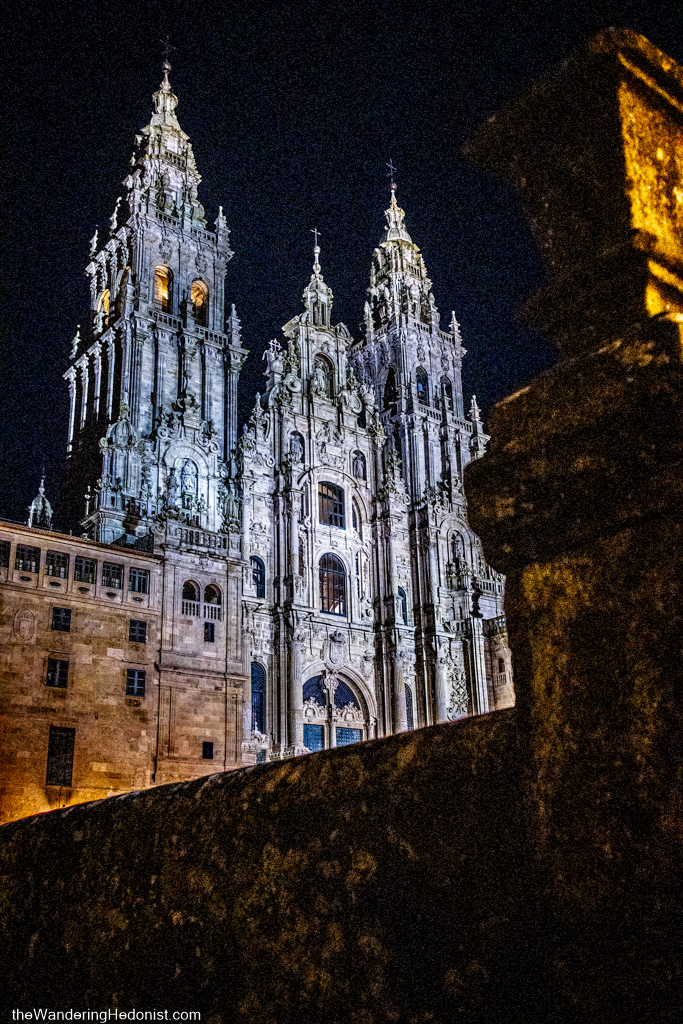
You see these traditional bands playing all over Portugal and western Spain. These bands originated in the 13th century and primarily for the purpose of earning food. Today Tuna bands are created by highschool and college students to keep the tradition alive. They travel to different cities and perform for free on the street. The band is called a Tuna and a player called a “tunante”. Their traditional caped uniform is called a “grillo”, a compound of cloak, doublet, shirt, stockings, baggy trousers and shoes. You can see patches of locations they’ve played stitched onto the capes and bright ribbons gifted by admirers. I saw young, usually same sex, groups of maybe 15-20 young students playing all over Porto. This particular band was playing after dark outside of the cathedral drawing crowds of pilgrims.
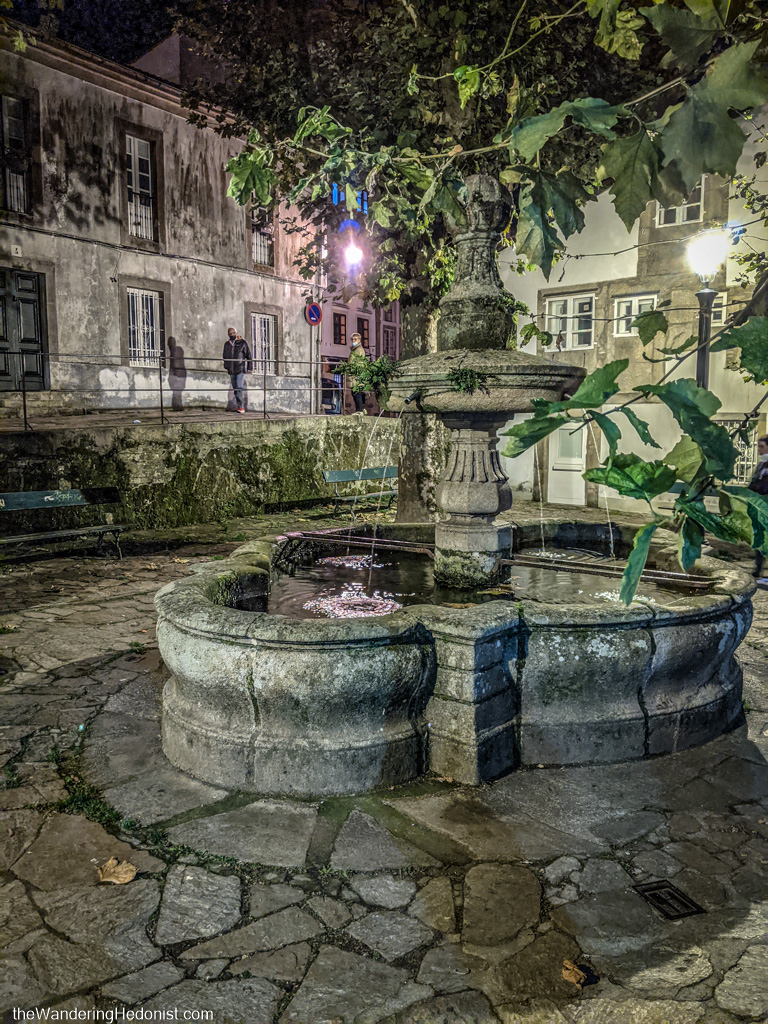
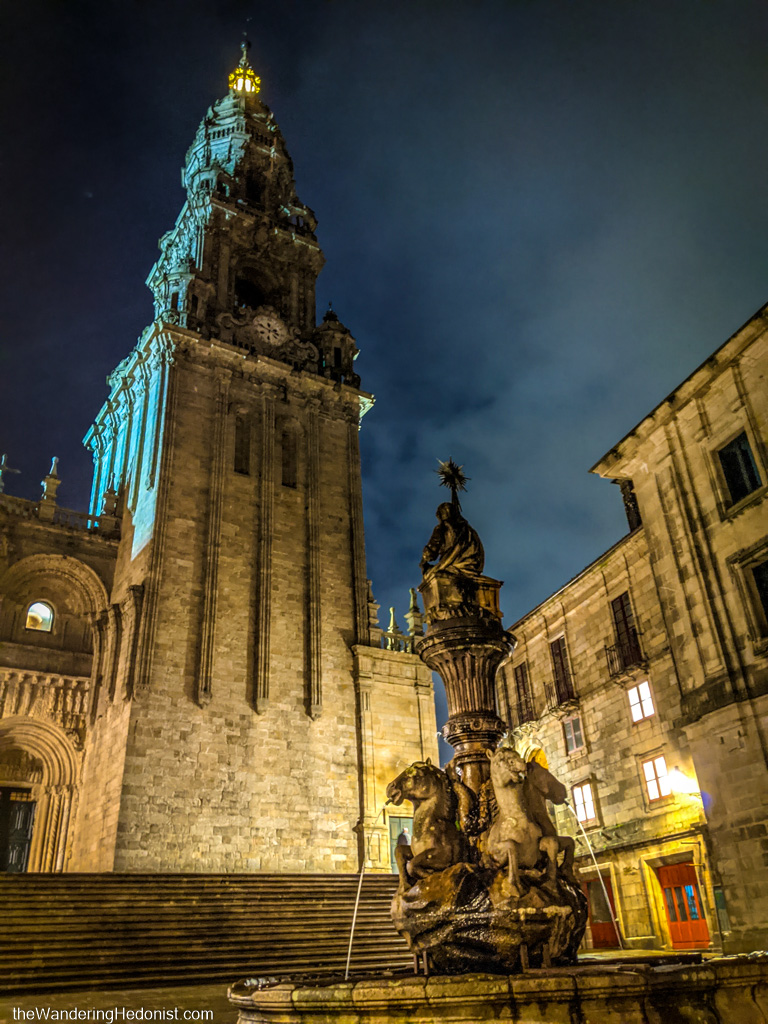
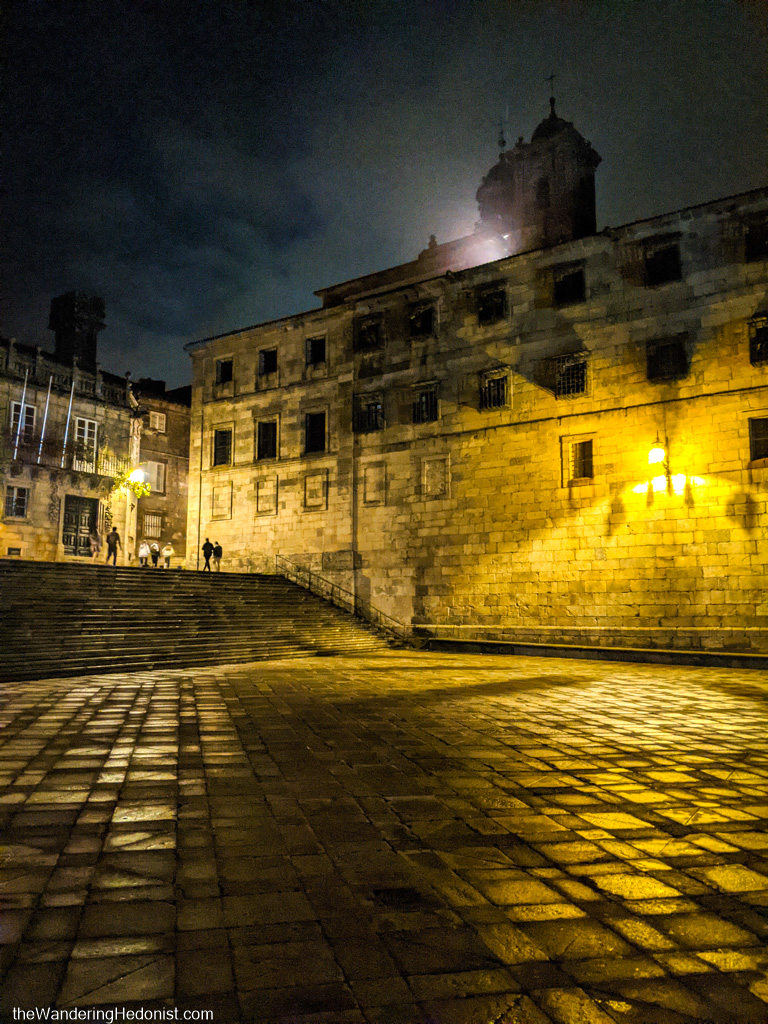
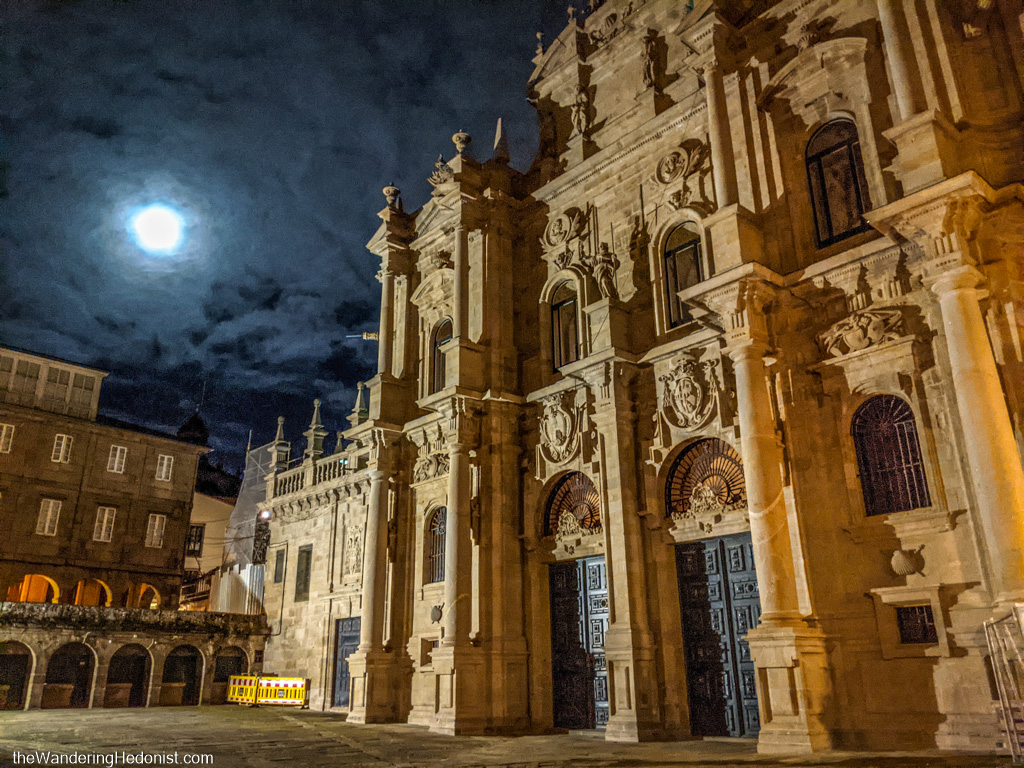
A few doors that I liked.
I was happy to see the medieval half-door half-window constructions that I had initially discovered in Croatia built into the church structures, I presume as little shop entrances. I still haven’t discovered the name of this particular type of door. And of course a couple of interesting knockers.
